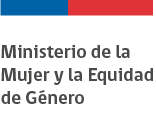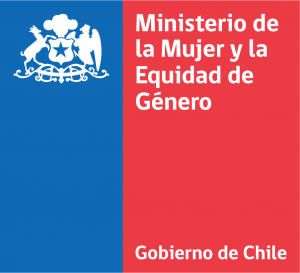
WOMEN WHO BLAZED THE TRAIL OF CHILE'S HISTORY
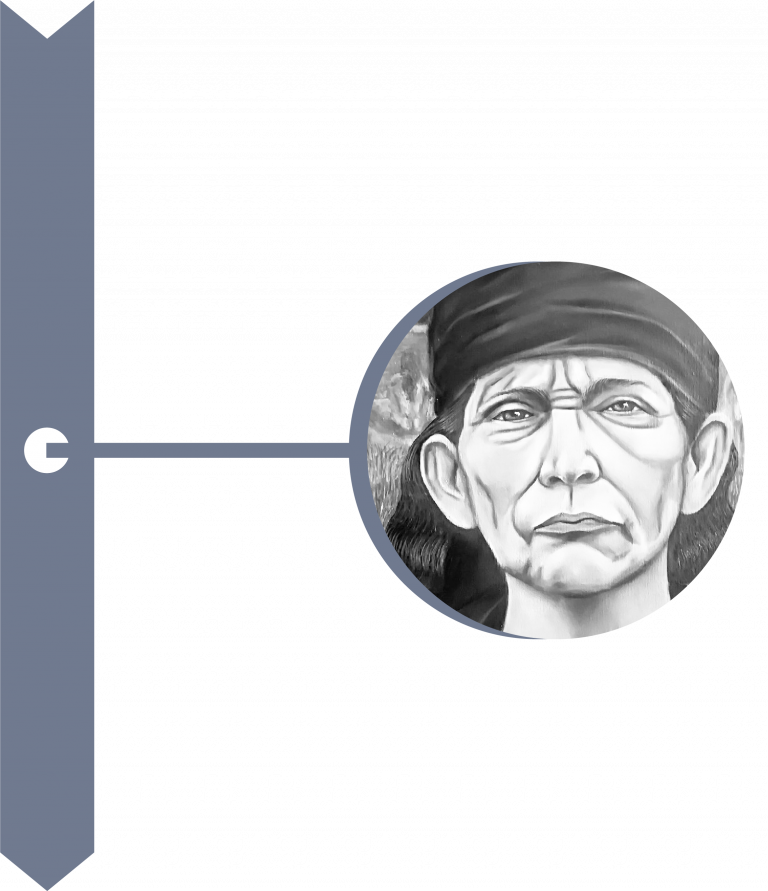

Janequeo or
Yanequén
16th Century
At the time of Chile’s conquest, the Spanish crown constantly sent troops to colonize the Mapuche territory. In this context, the Mapuche people, the largest group of indigenous inhabitants of Chile, concentrated all their efforts on rejecting the invasion. One of the main leaders of the resistance was Janequeo, a Mapuche heroine who stood out in a war carried out mainly by men. She fought against the Spanish to defend her land and to take revenge for the murder of her husband.
Given her broad knowledge of the Spanish war strategies, she was in charge of managing troops, attacking fortresses, and defending their land from the Spanish invasion. In her role as leader, she obtained numerous victories and is remembered for her bravery and fortitude.
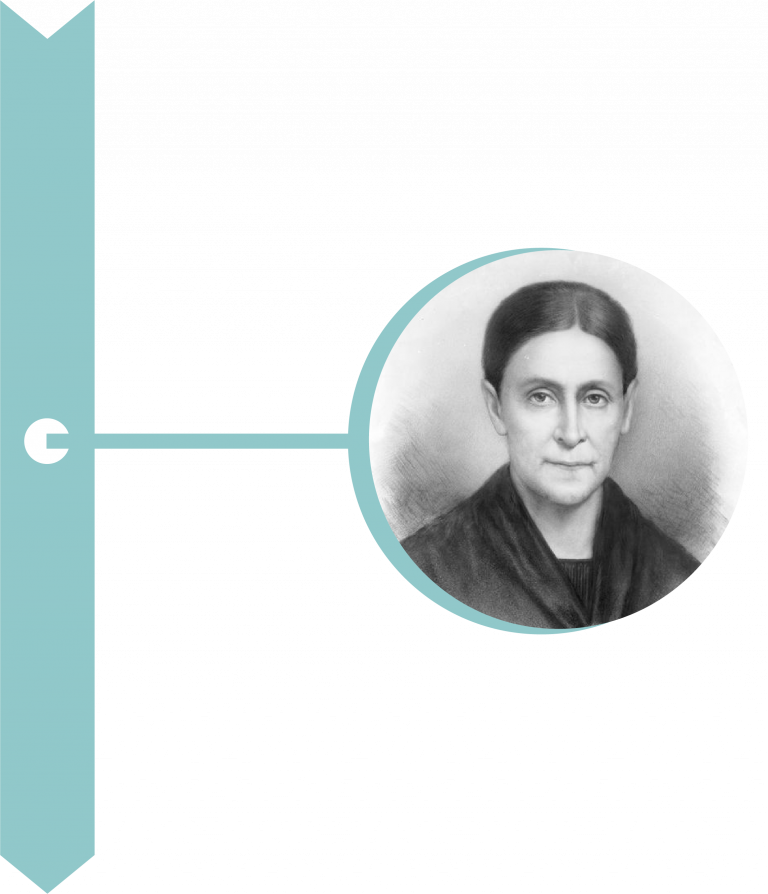
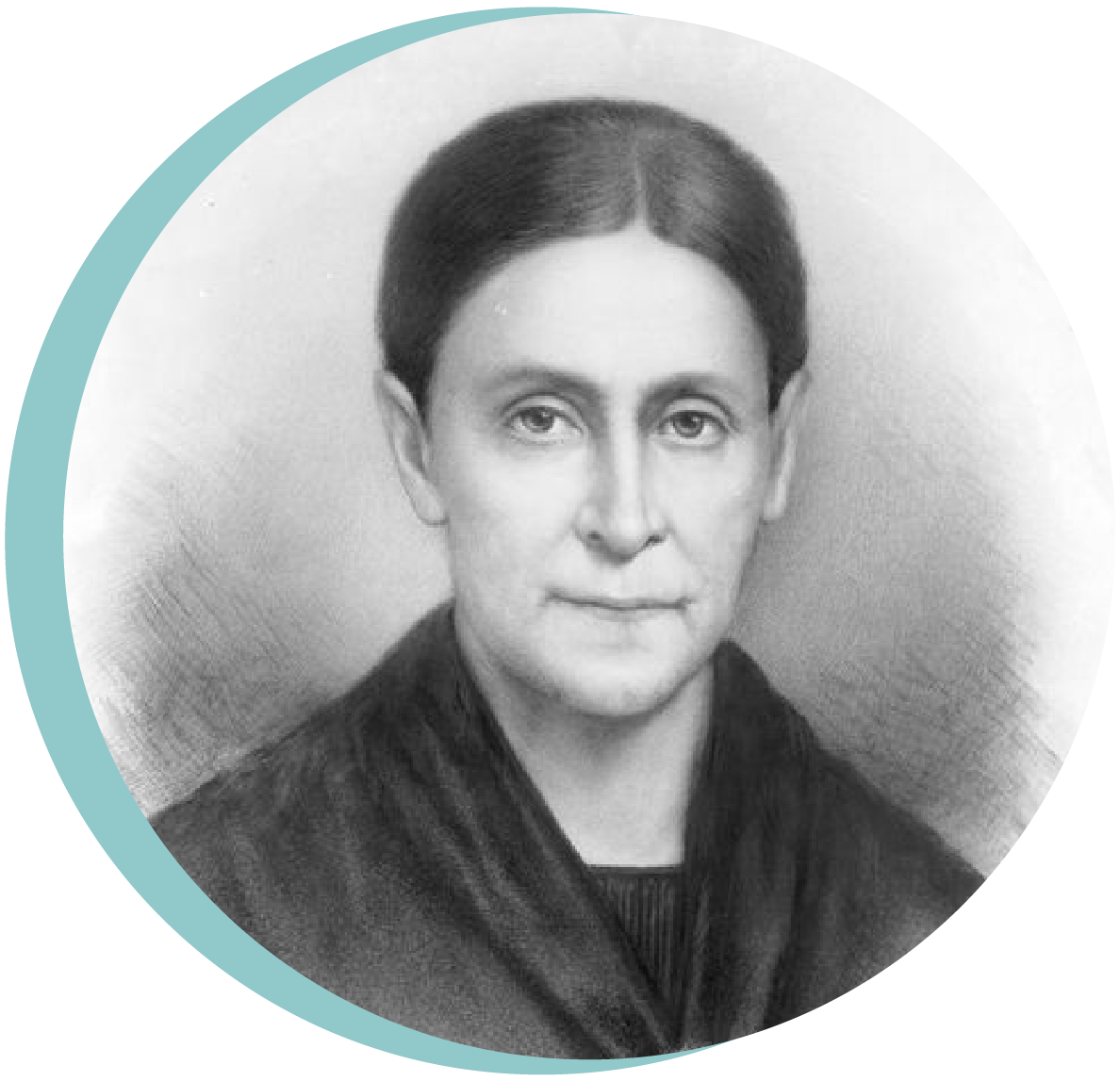
Paula
Jaraquemada
1768-1851
Icon of Chile’s independence movement, who decisively collaborated in the resistance, hiding and offering shelter to the patriotic troops.
Paula was born in Santiago in 1768 into a wealthy family, which granted her the status of one of the most important heirs of the Kingdom of Chile. In 1810, after the establishment of the First Government Assembly (Junta) of Chile, Jaraquemada became active in the patriotic cause, coordinating meetings and gatherings together with other prominent women to spread the independence movement’s values and ideals.
She decisively collaborated in the resistance, and her figure became more relevant following the Battle of Cancha Rayada, where she cured and offered food and shelter to the patriotic troops that were retreating after being defeated by the Spanish Royalists. The Spaniards raided her place, demanding to inspect the house where the wounded patriots were hiding. She bravely challenged the Spanish officer with a lit brazier, causing the soldiers to retreat. For this reason, she is considered a pivotal figure in Chile’s independence process.
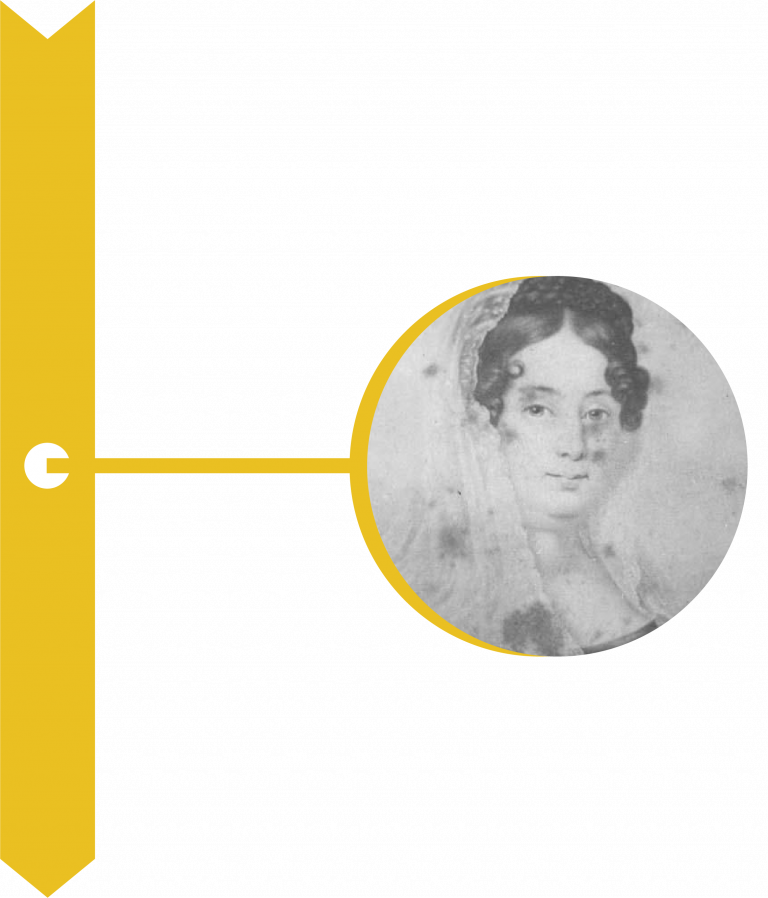
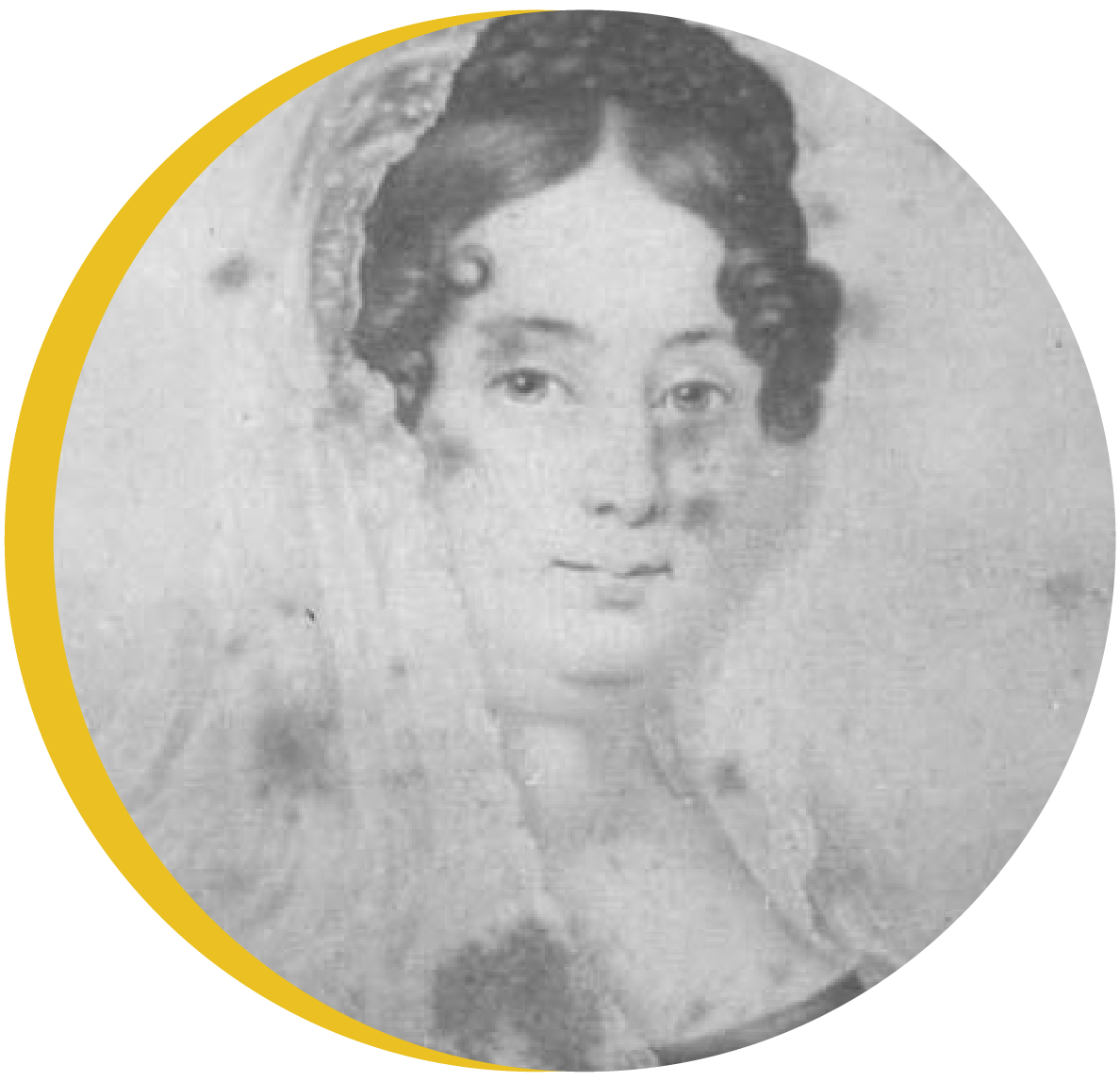
Javiera
Carrera
1781-1862
Chilean patriot who stood out for supporting the fight for the country’s independence and sewing Chile’s first national flag.
Javiera Carrera, born into one of the most aristocratic Chilean families, stood out for her commitment to Chile’s independence movement. She fought for the country’s independence alongside her three brothers, hosting political meetings in their home. After the battle of Rancagua of 1814, in which the Spanish defeated the patriotic troops, the Chilean army was forced to disperse and flee to the countryside and wilderness. Javiera joined the retreat along with her brothers, who were later assassinated.
The figure of Javiera Carrera is subject to admiration and curiosity in Chilean history, where her commitment to the patriotic cause stands out. Throughout history, she has been portrayed as a strong, determined, and highly intelligent woman.
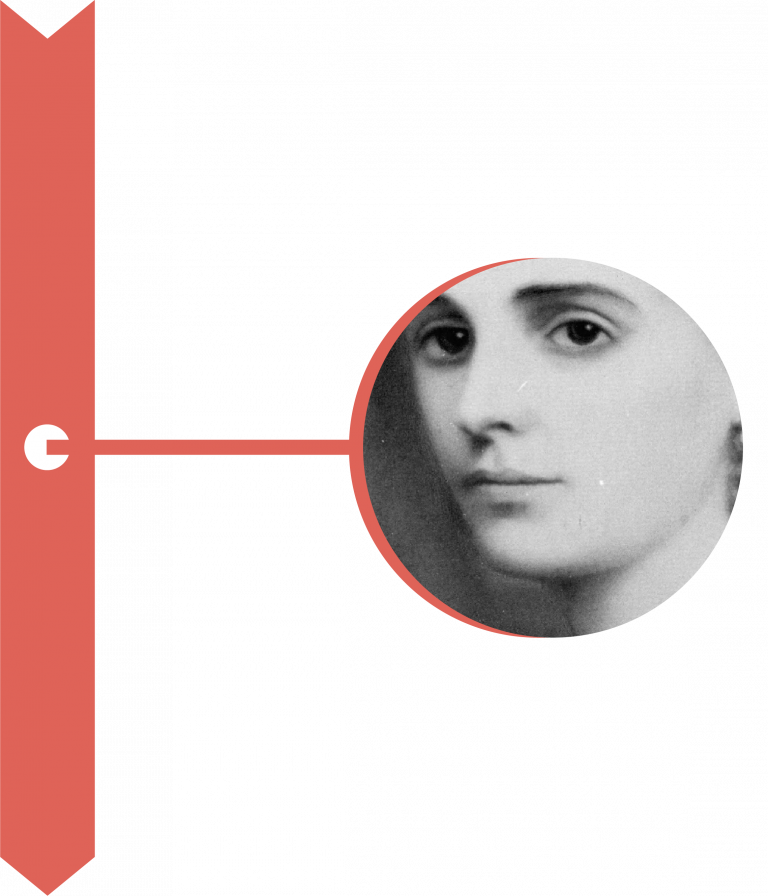
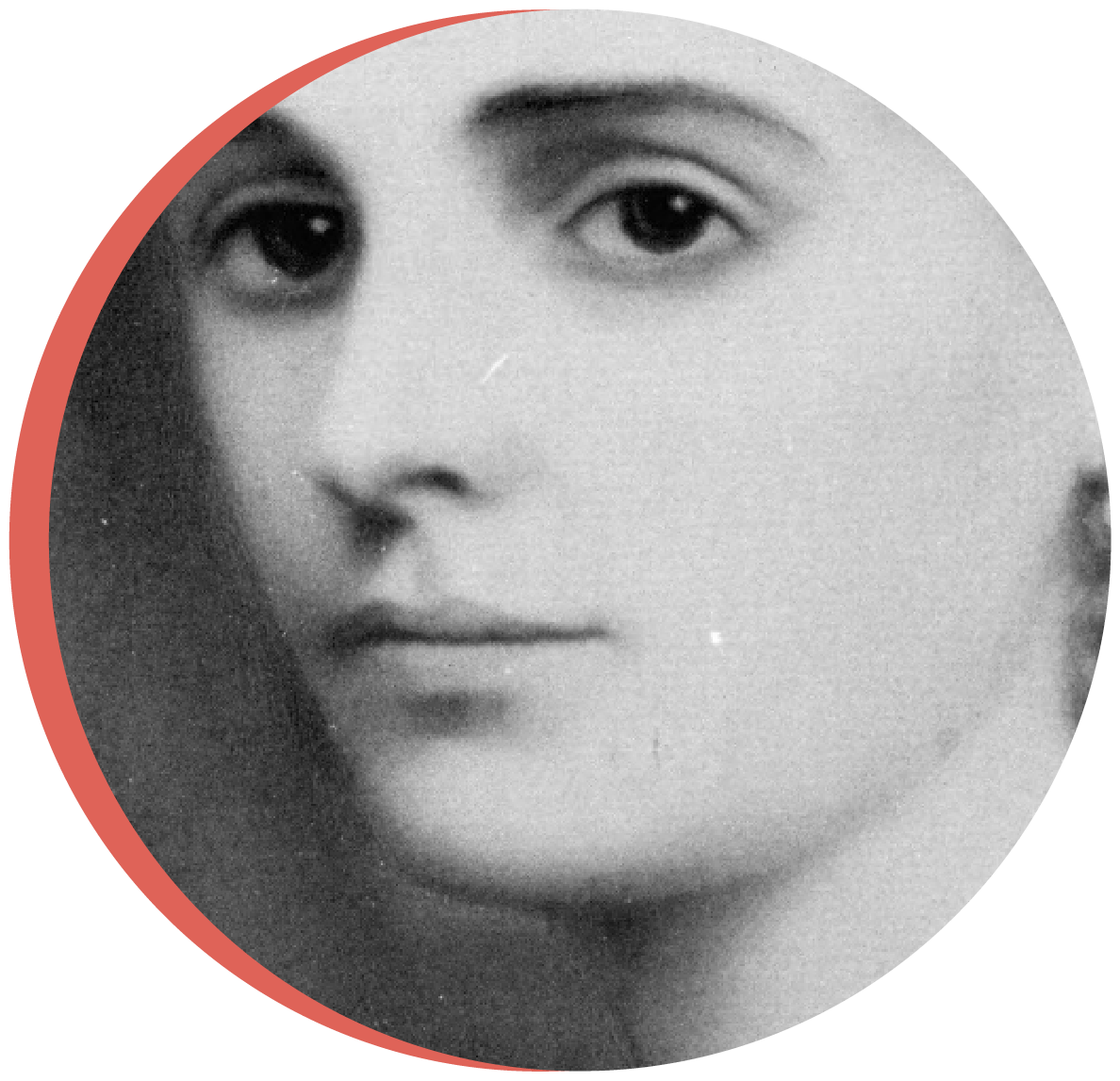
Isidora
Goyenechea
1836-1897
Successful entrepreneur, regarded as one of the wealthiest people in the world at the time, committed to bringing greater technological progress to Chile.
Isidora was born into a wealthy family and inherited a great fortune. However, she did not want others to run her business for her. She personally took over the family business tied to coal mines and agriculture, making these ventures even more successful. Isidora was not only passionate about business but also committed to bringing greater technological progress to Chile, for example, through the installation of the country’s first hydroelectric plant, turning Lota, the mining city where she lived, the most technologically advanced in Chile.
In addition to her commercial and strategic view, Isidora had a profound social sensitivity. She financed housing for the working-class community, paving works in popular neighborhoods, children’s homes, hospitals, foundations, and even national monuments.
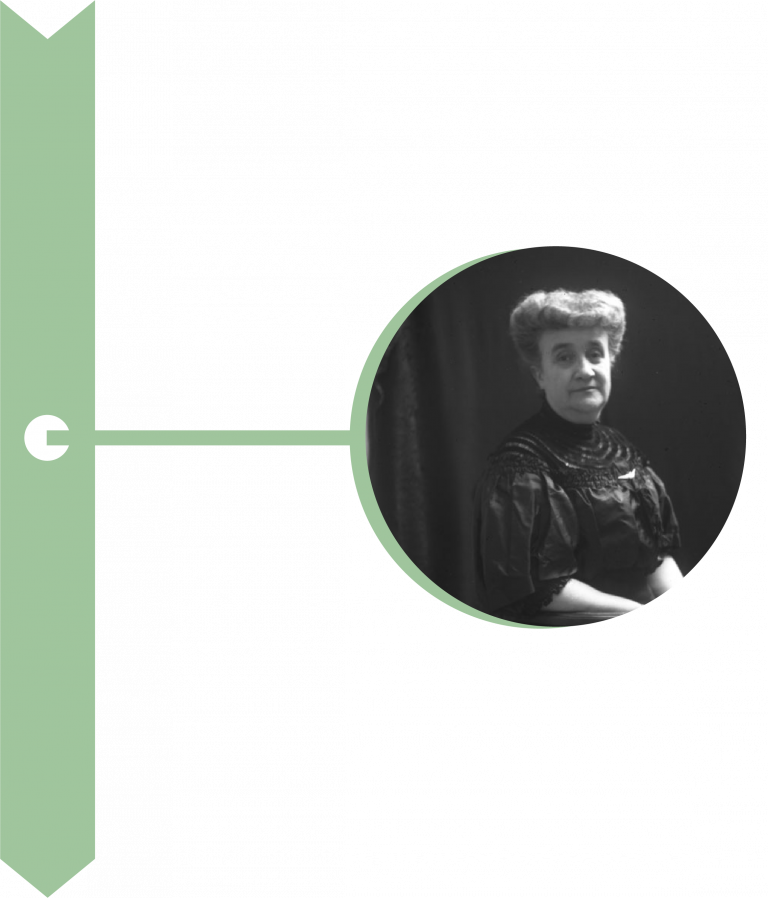

Martina
Barros
1850-1944
Outstanding Chilean writer, recognized as the country’s first intellectual woman and a prominent precursor of feminism in Chile.
Martina was born in Santiago in 1850 into a family of significant social and political influence. After her father’s death, Martina moved with her uncle, the prominent local historian Diego Barros Arana, who became her tutor.
At the age of 22, she published a translation of the text The Subjection of Women by John Stuart Mill, adding a prolog of her authorship that caused a great stir at the time.
She delivered a series of lectures at the Ladies’ Club of Santiago and the Academy of Arts and Letters, addressing, among other topics, the female vote and women’s emancipation.
By her contribution to the development of feminist activism, Barros’ ideas were consolidated thanks to organizations that brought together, systematized, and reinforced the approaches of this prominent precursor of feminism.
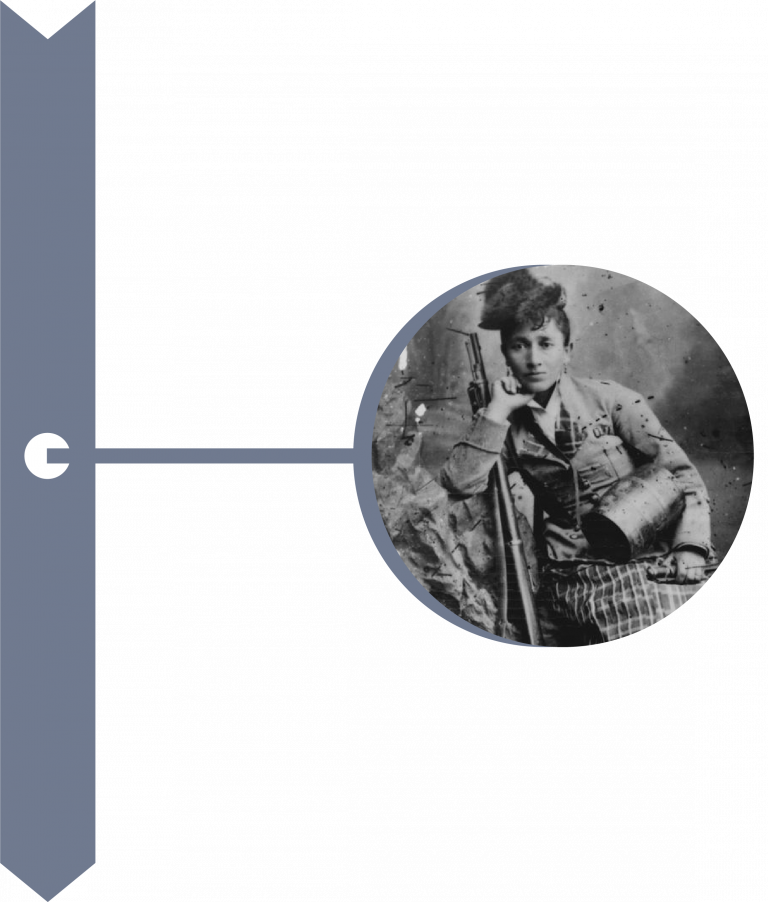
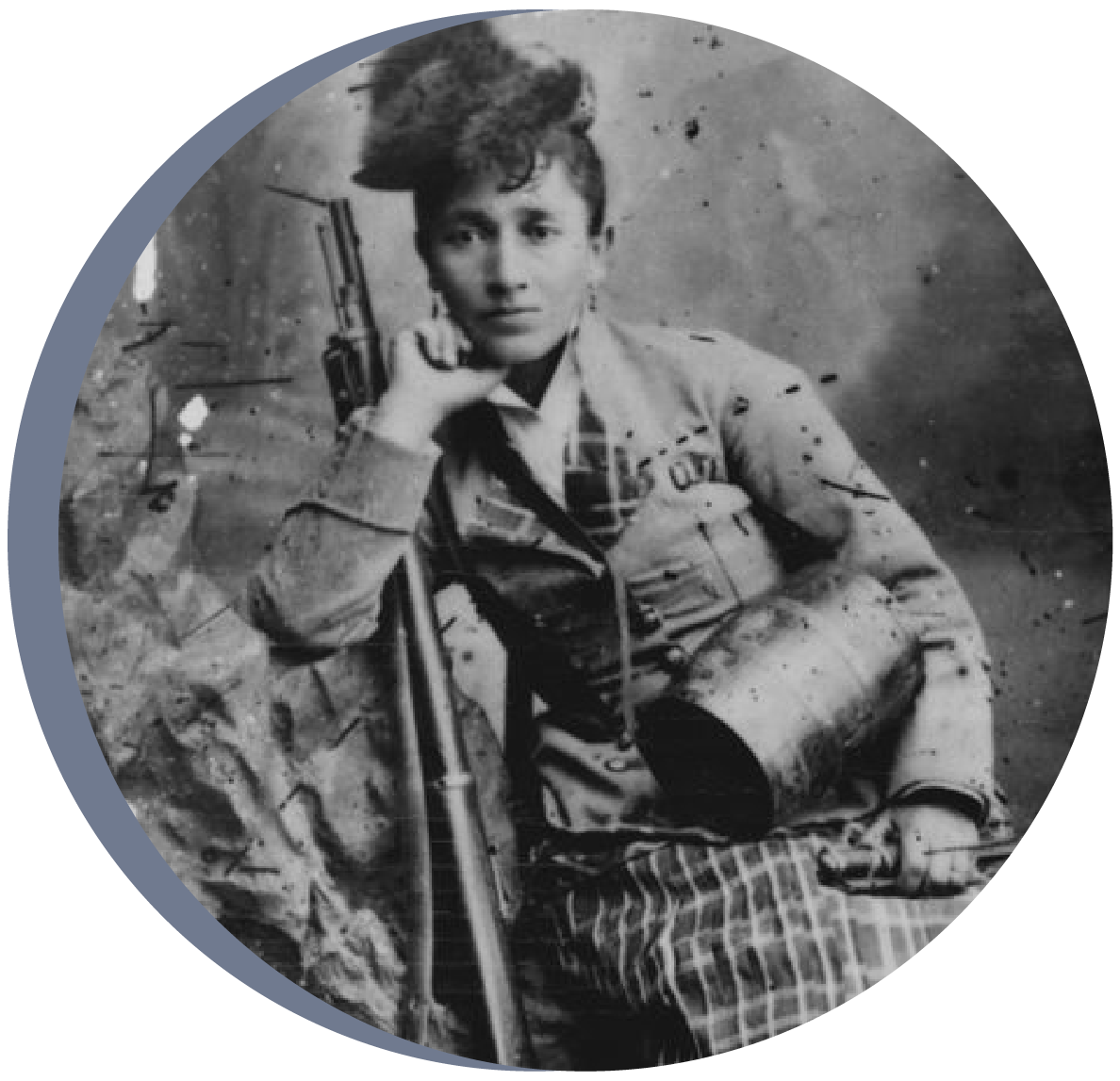
Irene
Morales
N/A-1890
Prominent military, second sergeant, and sutler. One of the first and most remembered women soldiers who served during the War of the Pacific.
Irene Morales has been recognized as the most popular sutler (cantinera) among those who participated in the War of the Pacific. In 1877, Morales married and became widowed after a few months, which led her to move to Antofagasta.
On February 14, 1879, the Chilean troops landed in Antofagasta. Morales, disguised as a man, tried to join the army but was discovered and sent to the Third Line regiment as a sutler. She actively participated in the landing of Pisagua and the combat of Dolores and, once the battle was over, she dedicated herself to treating the sick and wounded. Upon hearing her story, General Manuel Baquedano officially authorized her to wear the Cantinera’s uniform and granted her the rank of sergeant. She fought in the battles of Tarapacá and Campo de la Alianza and participated in the assault on the Morro de Arica.
Morales returned to the capital when the war ended. Although she was initially popularly acclaimed, she died in 1890 in complete anonymity and mired in poverty, as did several war veterans.
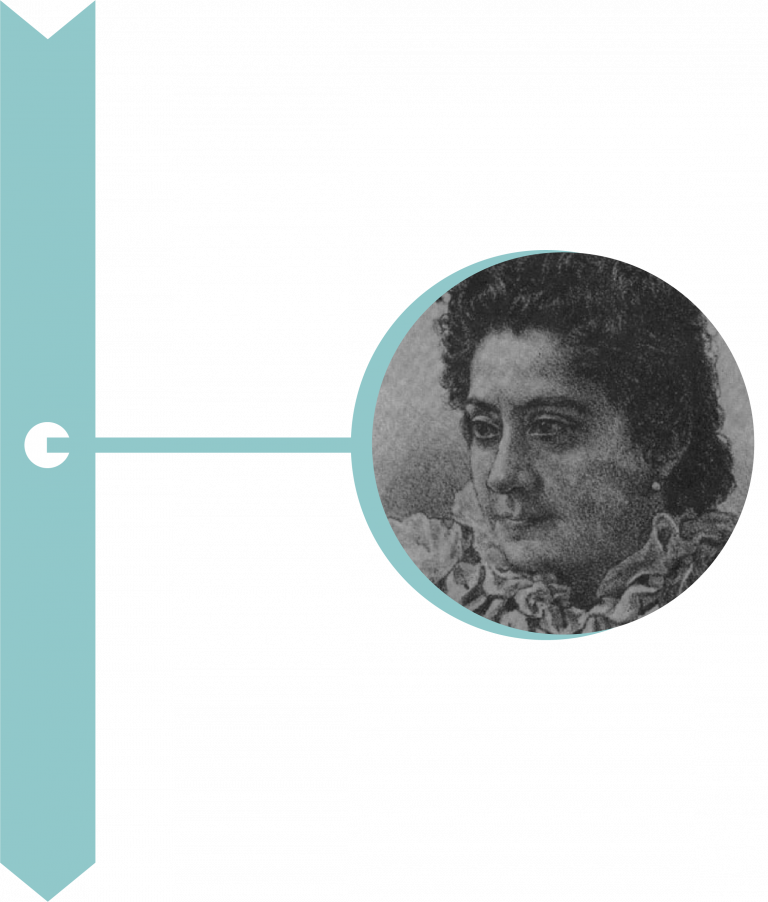

Eloísa
Díaz
1866-1950
First female medicine student at the University of Chile and the first female doctor in Chile and South America.
At just 15 years old, Eloísa became the first woman to attend the University of Chile’s Medicine School, just a few years after the law that allowed women to access higher education was passed. She faced various prejudices, such as her classmates’ mistrust and doubts about her intellectual capacity. Despite this, she managed to earn her classmates’ and teachers’ affection over time.
Eloísa was the first Chilean woman to graduate as a doctor, becoming the best medical clinic and obstetrics student in her class. She obtained her professional title in 1887, being the first woman in Chile and the Americas to achieve this. She was especially interested in improving school hygiene programs, dedicating her career to this cause, and promoting initiatives such as creating dental services in schools, founding kindergartens, implementing polyclinics, and promoting free school retreats.
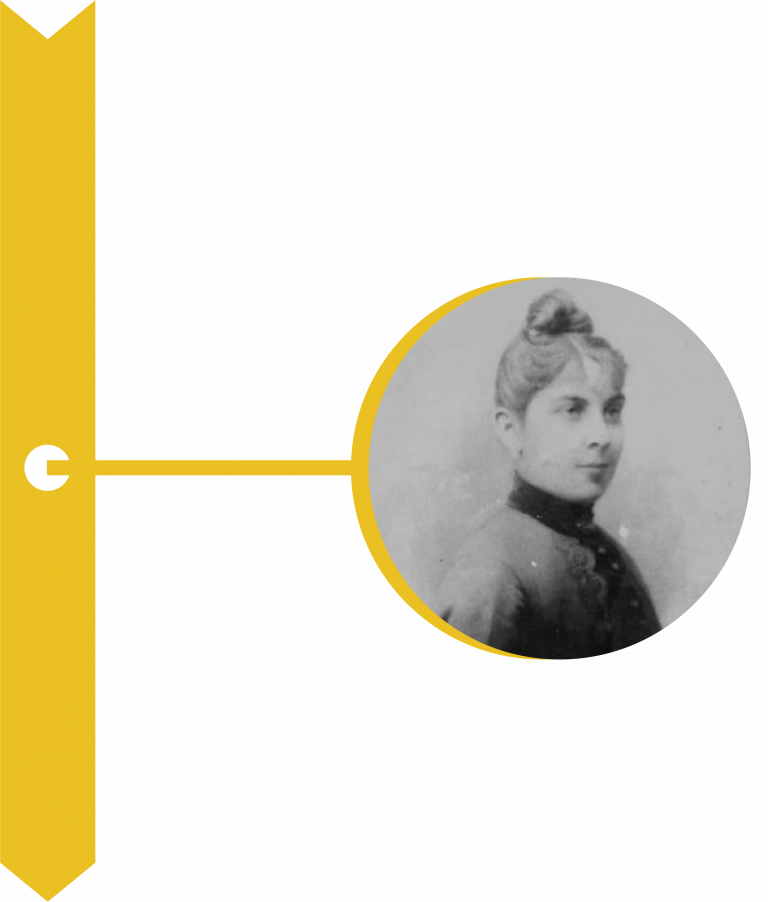
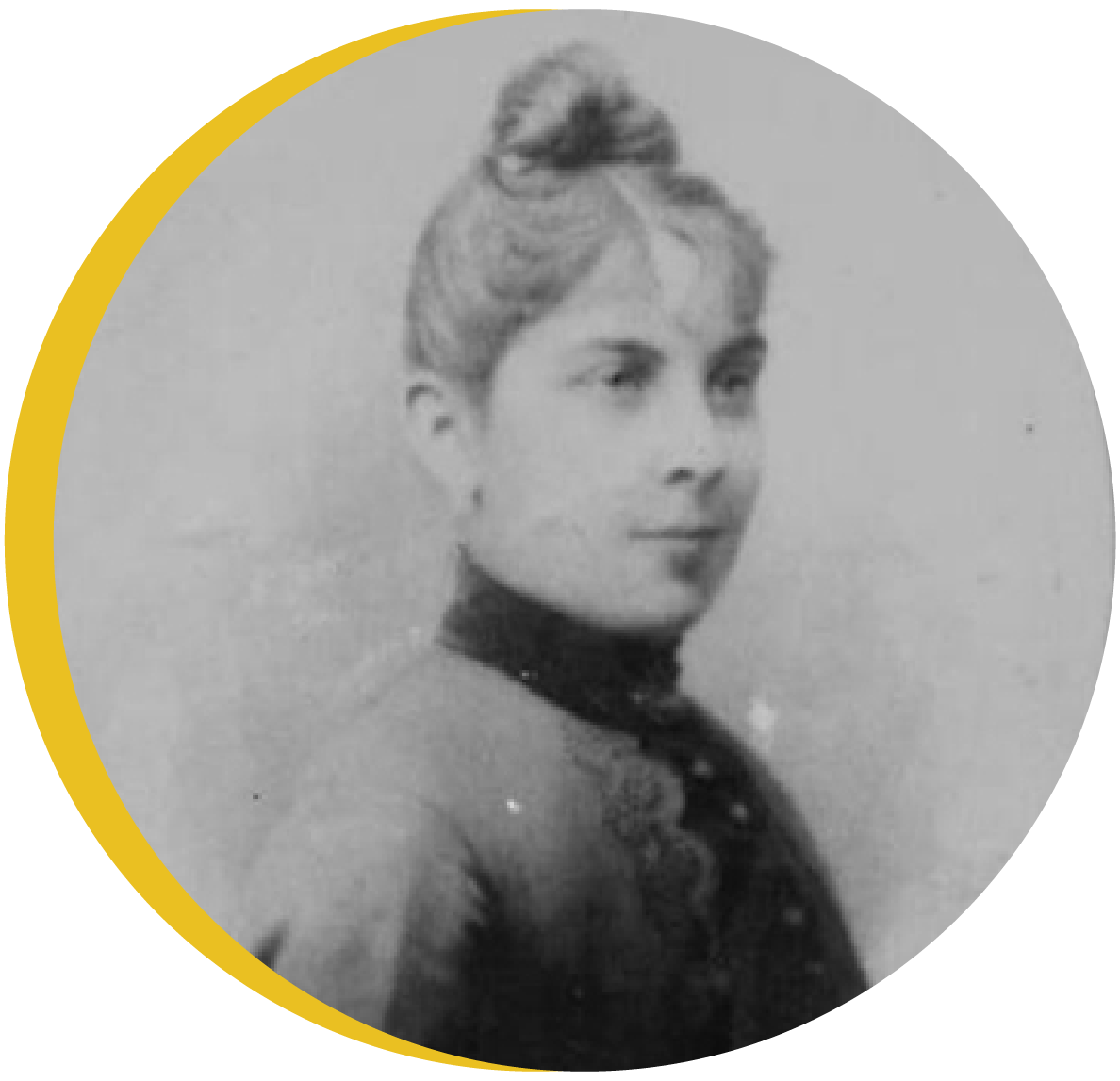
Matilde
Throup
1876-1922
First Chilean female lawyer, who set a precedent by appealing to the Supreme Court to overturn women’s ineligibility to hold public offices.
Throup entered the University of Chile to pursue Law studies in 1887, where she suffered discrimination from professors and colleagues, which had a significant impact on her life. Despite this, in June 1892, she obtained her Law bachelor’s degree and was later admitted to practice law by the Supreme Court of Justice of Chile.
During her career, she fought tirelessly to achieve equality for women before the law. In 1893, she applied for a role in the Court of Ancud, which was not granted to her because she was a woman. Given this, Throup appealed to the Supreme Court, which overturned the original decision. This fact set a precedent in Chile and countries such as Belgium and Argentina, where her case was cited as jurisprudence for women lawyers seeking access to public office.
Currently, several university halls and a series of lawyers’ awards bear her name.
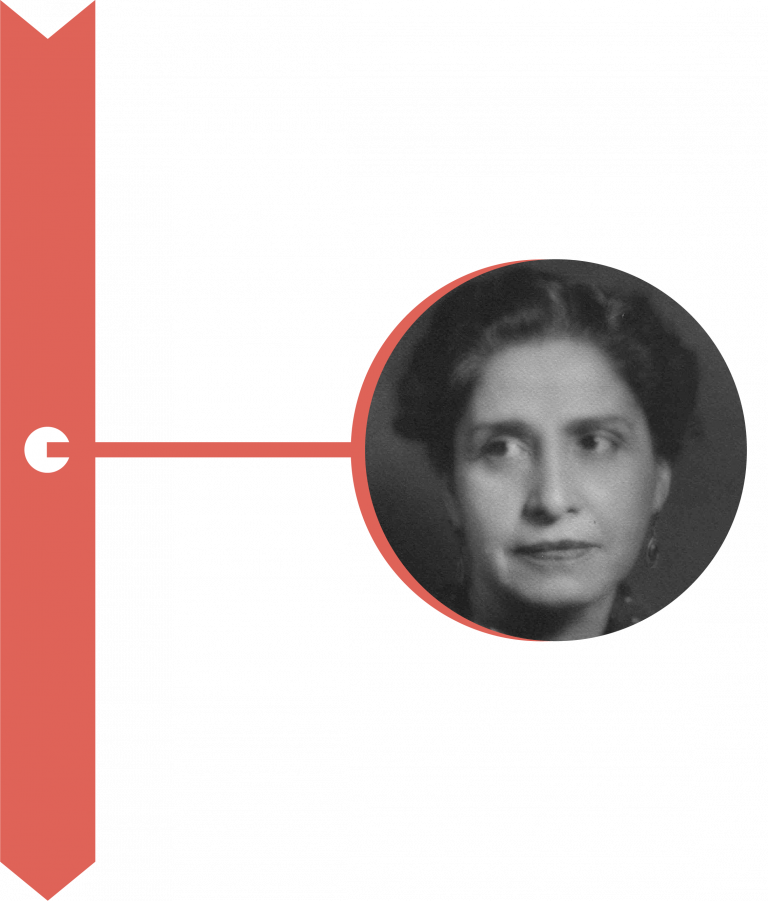
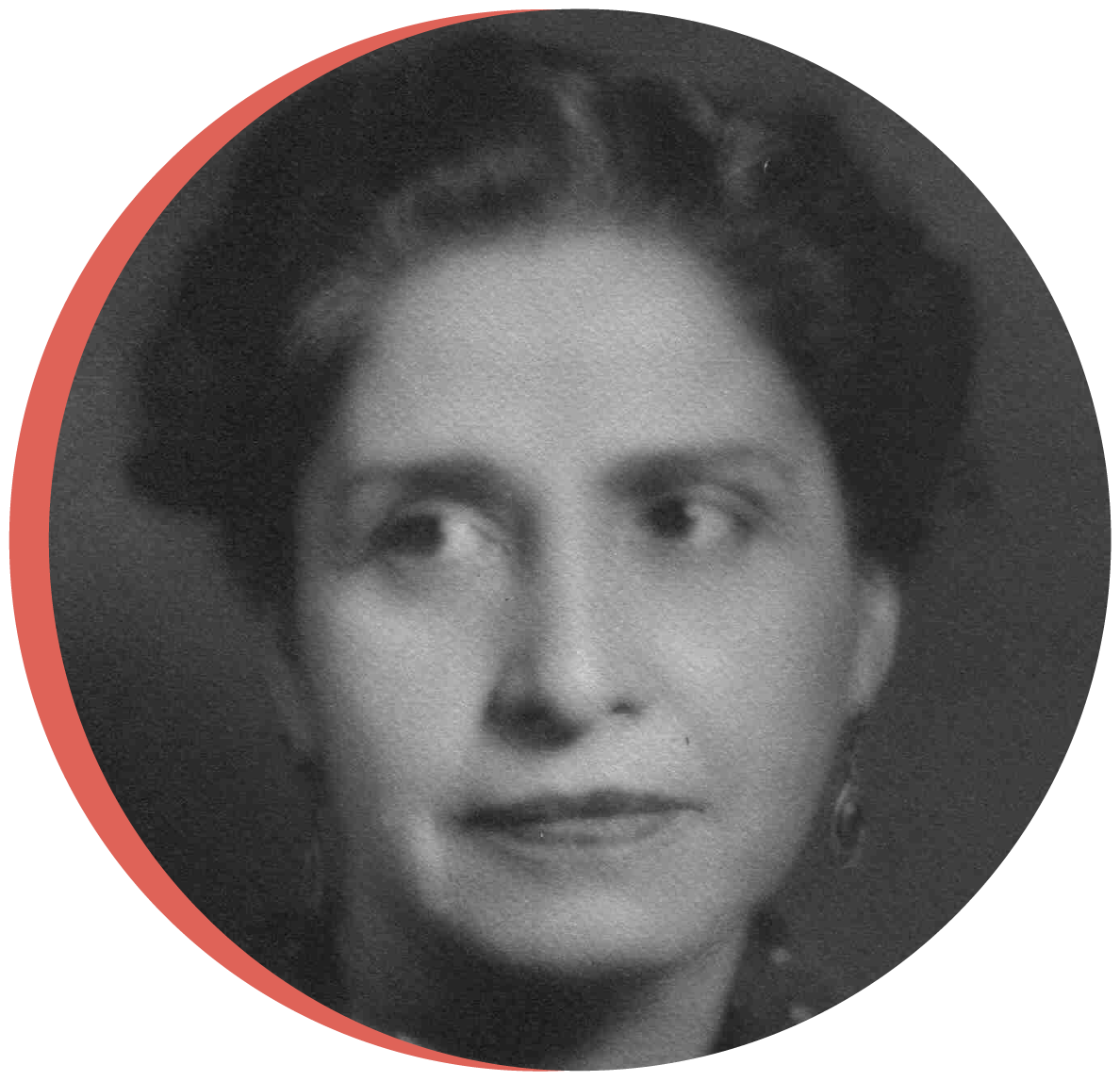
Amanda
Labarca
1886-1975
Prominent professor, writer, diplomat, and politician. She fought to improve the situation of women in Latin America and for women’s suffrage in Chile.
Amanda studied at the University of Chile, where she obtained the title of Spanish Teacher in 1905. She continued her studies at Columbia University in New York and The Sorbonne in Paris. Back in Chile, she joined the Faculty of Philosophy and Humanities of the University of Chile, becoming the first woman to hold a university chair in the Americas.
Thanks to her studies abroad, Amanda was introduced to European feminist ideas she wanted to disseminate in Chile. In women’s meetings, she actively promoted the social role of education and founded the Reading Circle, a space where women met to discuss academic matters. She was also one of the National Committee for Women’s Rights founders, along with other prominent feminists, and was Chile’s representative to the United Nations and head of the Commission on the Status of Women (CSW).
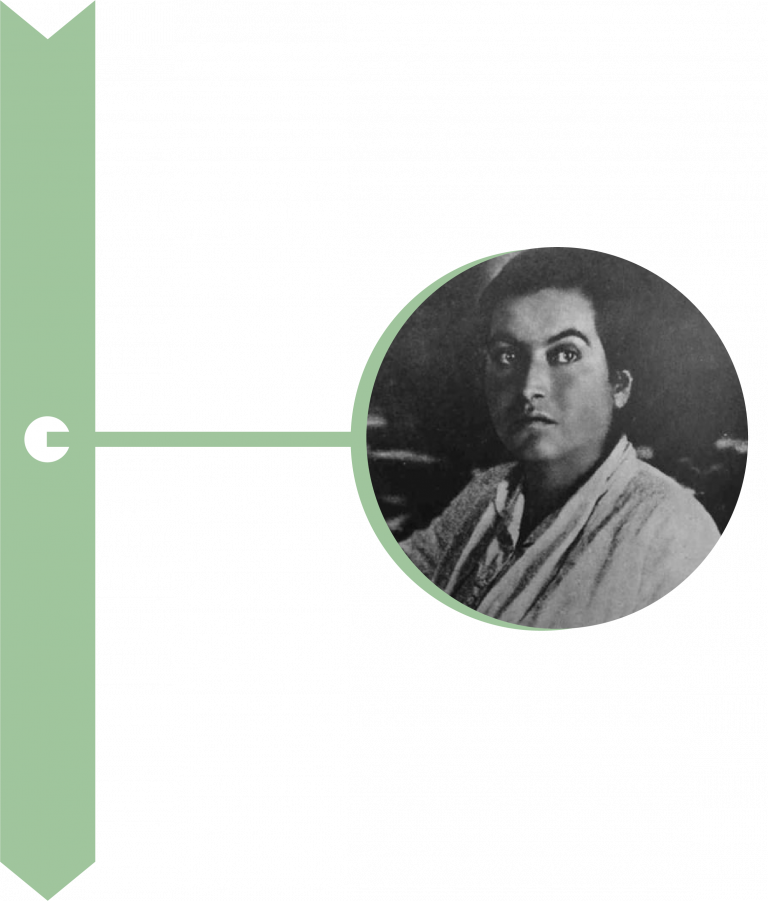
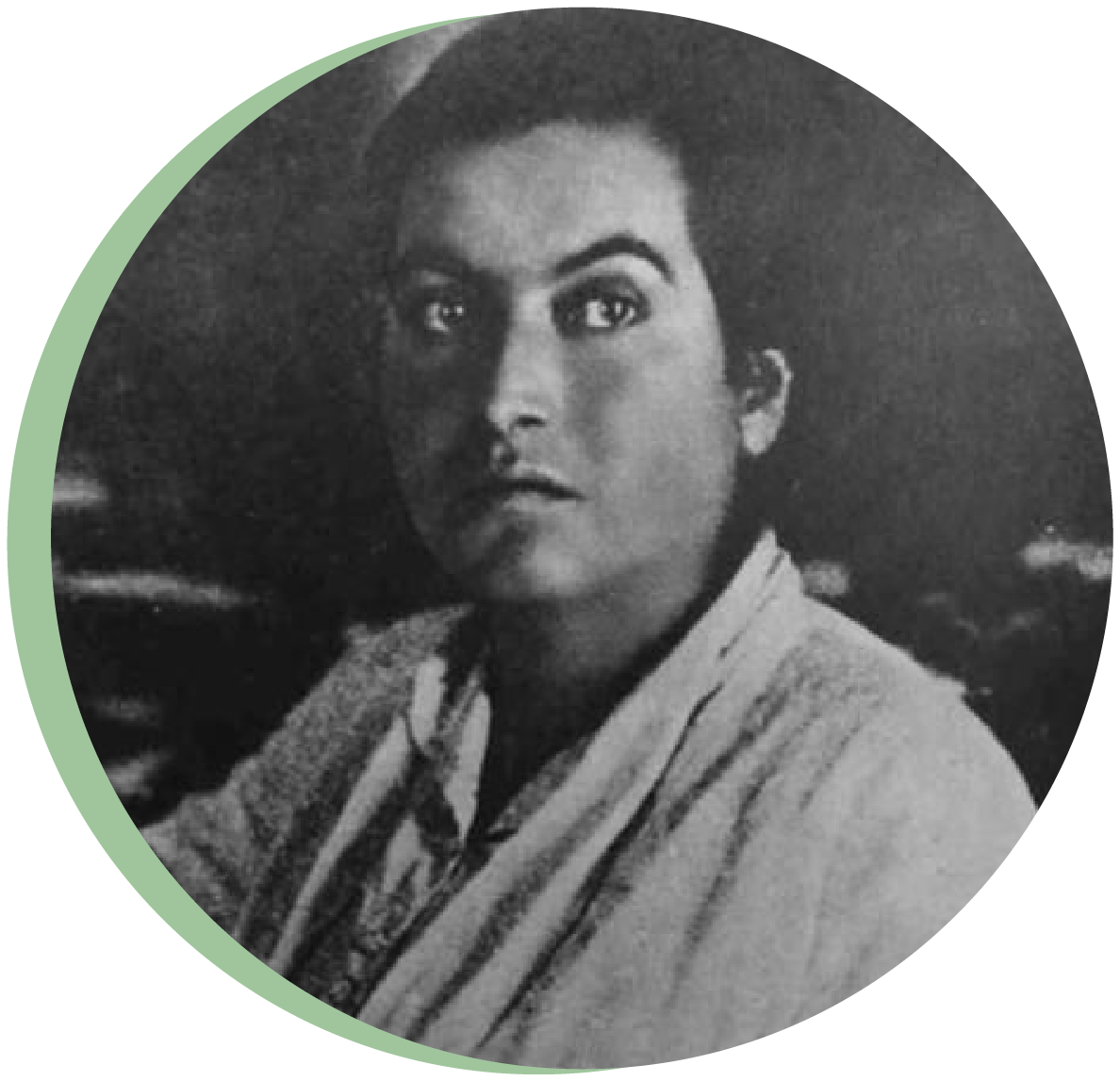
Gabriela
Mistral
1889-1957
One of the most notable poets in Chilean and Iberoamerican literature. In 1945, she won the first Nobel Prize in Literature for a Latin American author.
Born into a modest family under the name of Lucila Godoy Alcayaga, she worked as a teacher at several schools, promoting education as a key aspect for the development and protection of children.
She published her first writings in local and regional press, and in 1914, she won the first prize in a national literature competition with a series of poems called Sonetos de la muerte (Sonnets of death), rising to fame in Chile. Since then, she started using the pen name “Gabriela Mistral,” paying tribute to two of her favorite poets, Gabriele D’Annunzio and Frédéric Mistral.
Desolación (Desolation), considered her first masterpiece, was released in 1922 and gave her international recognition, making her one of the most promising writers in Latin America. In addition to writing, she worked as a consul in Europe and the Americas. In 1945 she was awarded the Nobel Prize of Literature, the first one for a Latin American author. Years after this international recognition, she was finally awarded Chile’s National Prize of Literature in 1951.
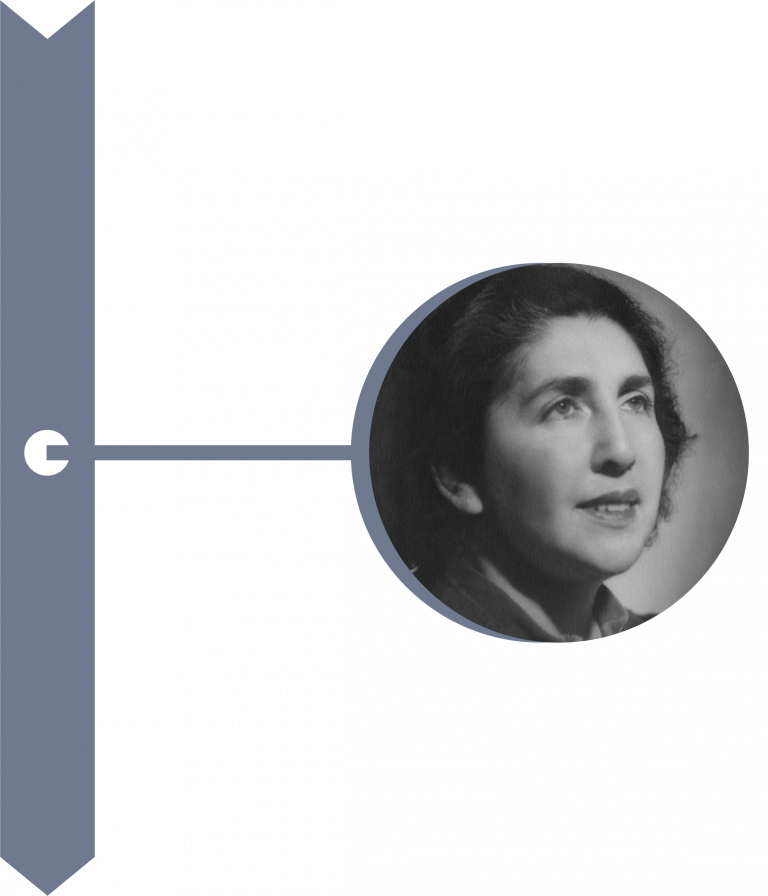
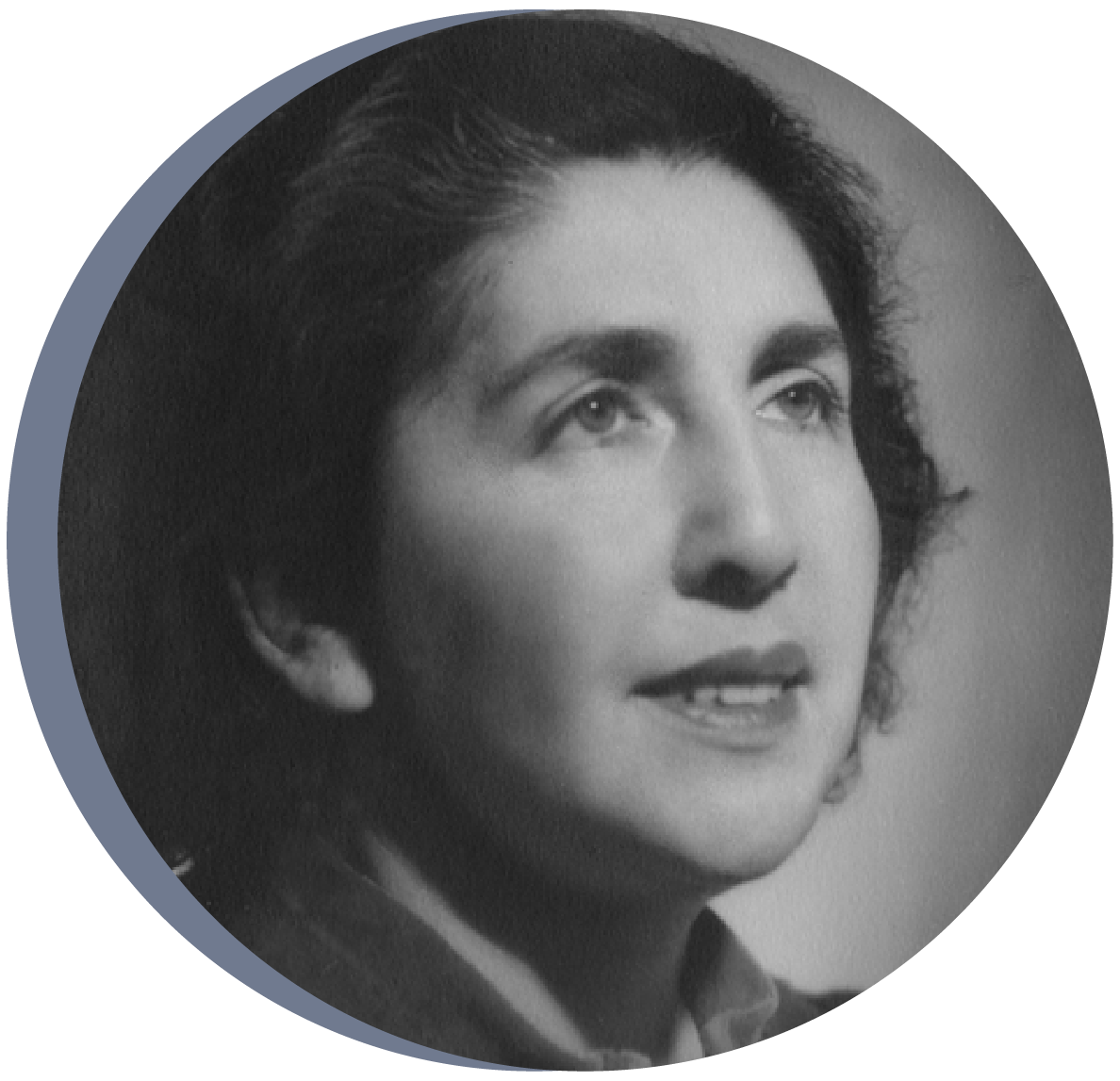
Graciela
Contreras
1895-1974
Chilean politician, first female mayor of Santiago, becoming the first woman in this post, which only five women have held.
Born in Santiago in 1895, Contreras was a member of the Socialist Party of Chile since its foundation in 1933, where she participated in the Social Women’s Action area. On January 6, 1939, President Pedro Aguirre Cerda appointed Contreras as mayor of Santiago, the capital of Chile, a nomination endorsed by the Movement for the Emancipation of Women of Chile (MEMCH). She became the first female mayor of Santiago and the second woman to take office as mayor in Chile. Despite this milestone, only four other women have been elected to that position after her.
She served as mayor until March 19, 1940. During her term, she expanded playgrounds and sports programs in low-income neighborhoods, created support programs for the working class, and served as a delegate to the Inter-American Commission of Women.
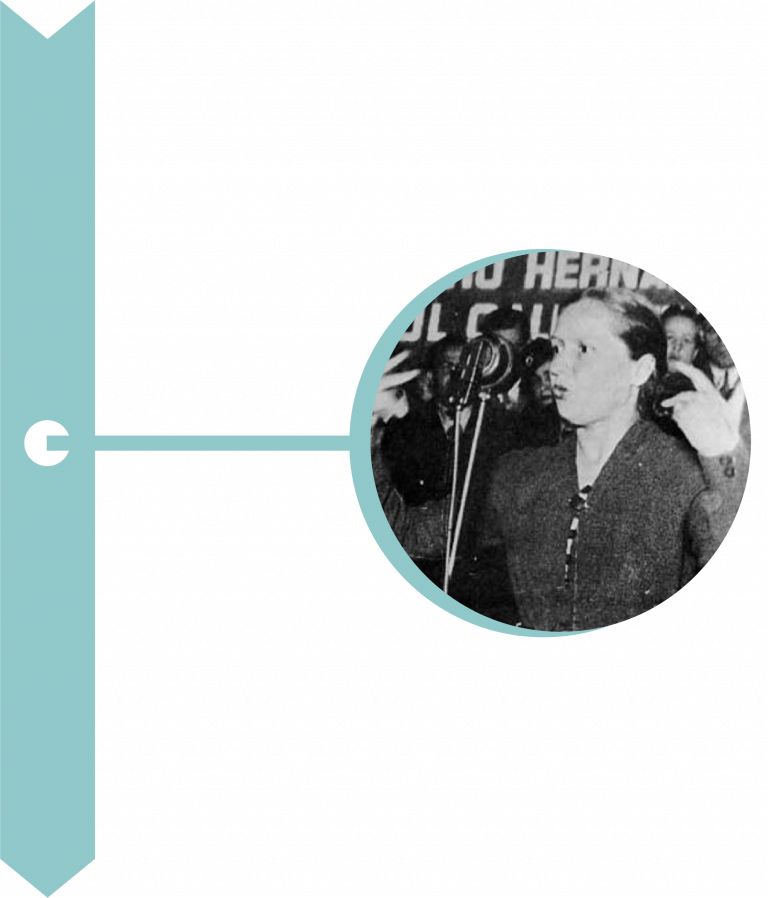
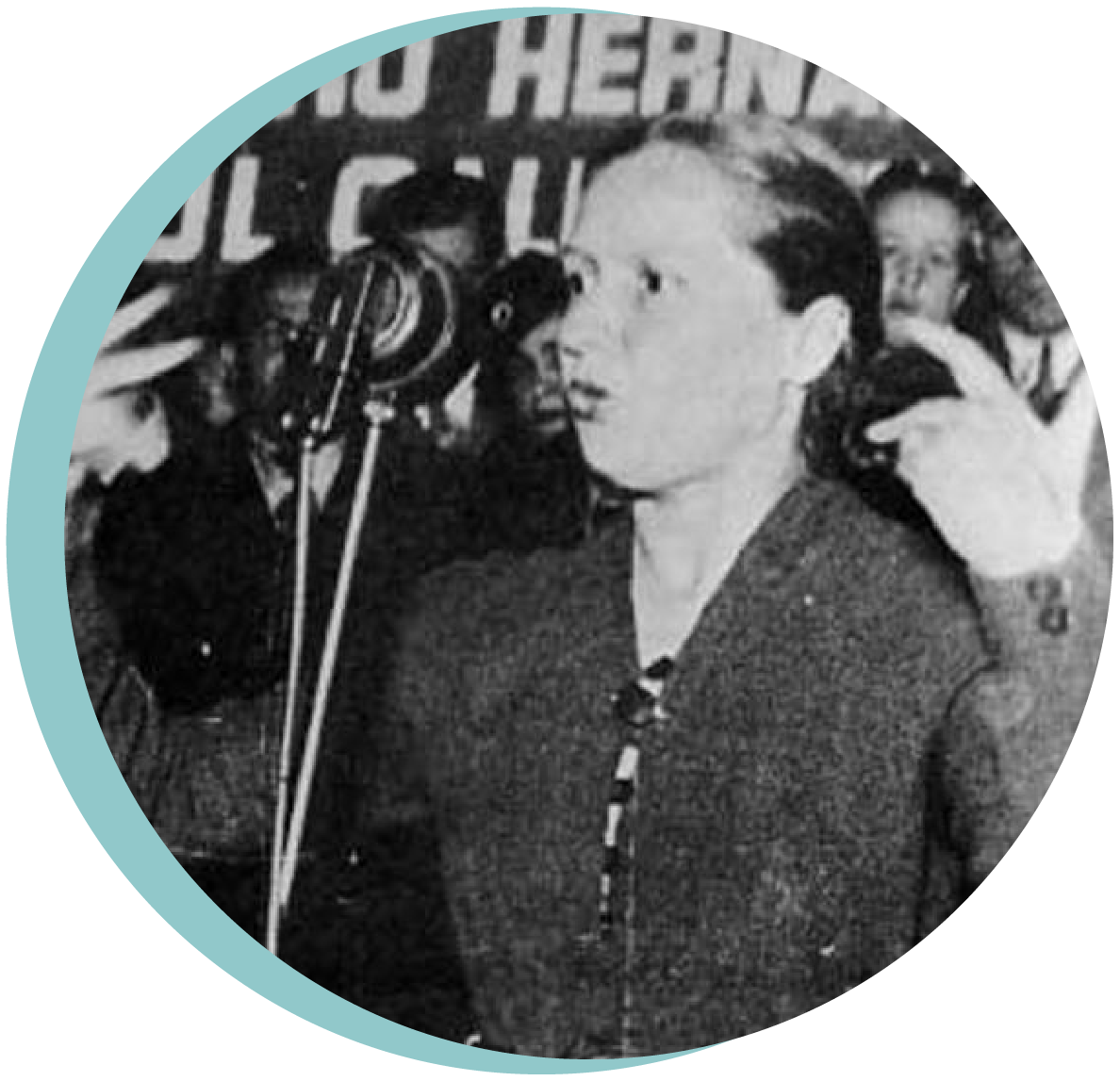
Elena
Caffarena
1903-2003
Lawyer, jurist, and politician that fought for women’s emancipation in Chile and formed the first political organization for women’s rights.
Elena studied law at the University of Chile, being one of the first fifteen women in the country to obtain a law degree. During her university years, she became interested in workers’ rights and women’s civil and political rights. In 1935 she formed the Movimiento Pro-Emancipación de las Mujeres de Chile (Movement for the Emancipation of Women in Chile), the first political organization in favor of women’s rights. Later, she was part of the founding members of the Asociación de Mujeres Universitarias (Association of University Women), a key group to obtaining women’s suffrage.
As a lawyer, Elena was primarily dedicated to promoting women’s rights. She was also the promoter and writer of the first bill that would allow women to vote in elections, although it took eight years for the law to be enacted.
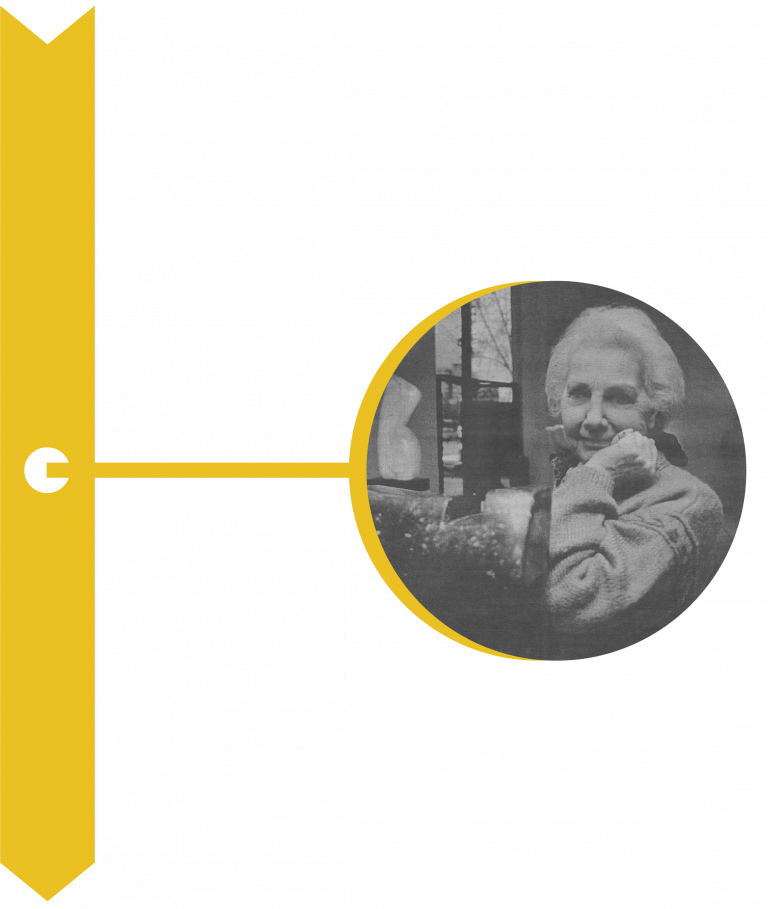
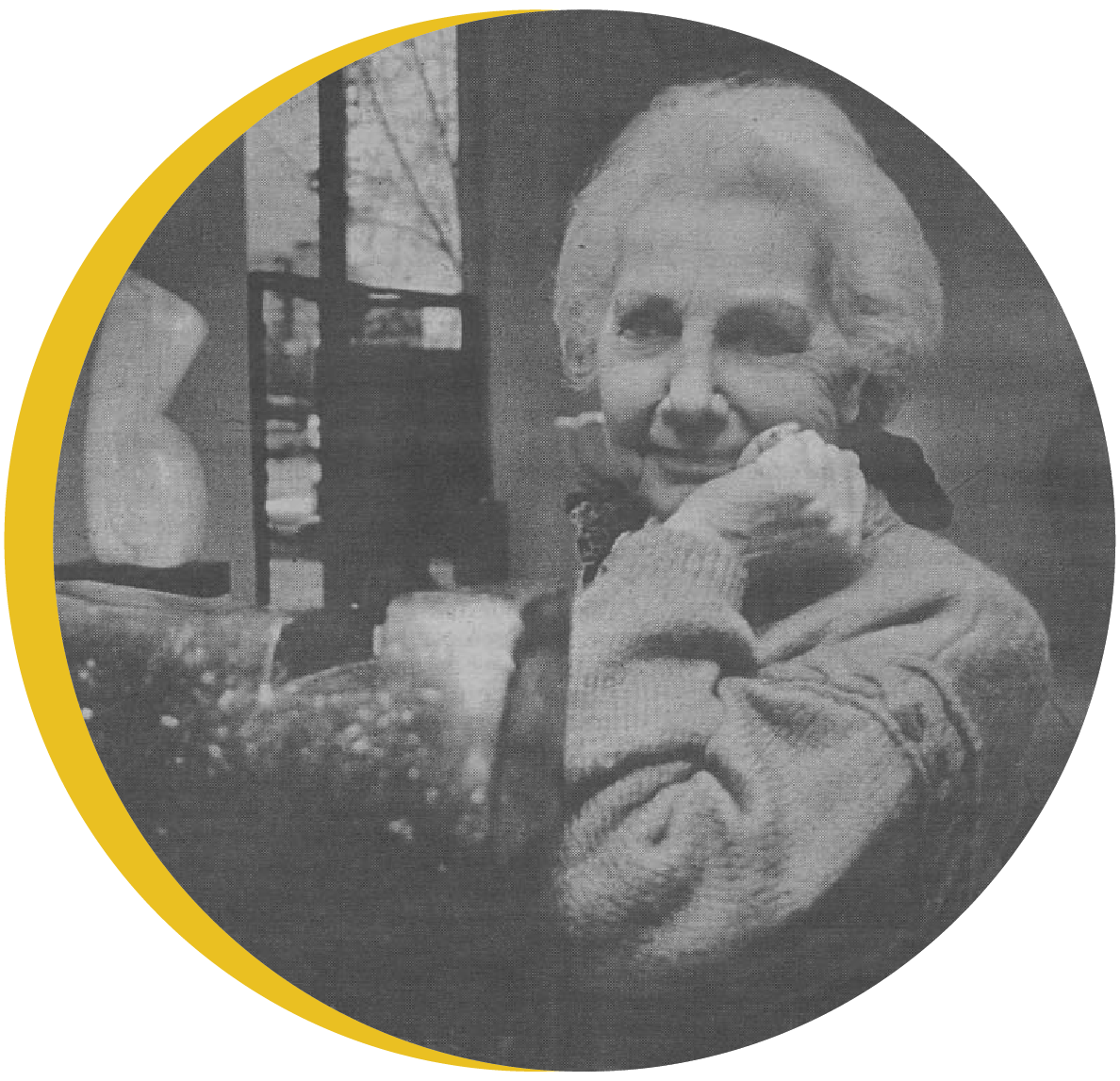
Lily
Garafulic
1914-2012
Sculptor, academic, and the first woman director of the National Fine Arts Museum. Her work was featured in the iconic American magazine Life.
Lily studied at the University of Chile’s School of Fine Arts, where she met prominent national artists. In 1944, she was awarded a Guggenheim Fellowship to New York City, where she studied at the prominent New School of Social Research (now The New School). Back in Chile, she began her career as a university teacher and worked for years on the sculptures placed on the top of Santiago’s Lourdes Basilica, an outstanding work featured in Life magazine.
Lily was also named Chile’s representative in UNESCO’s International Association of Plastic Arts and President of the UN’s Organizing Committee for the Third Regional Congress of Plastic Arts. In 1973 she became the first woman director of the National Museum of Fine Arts, where she stood out for modernizing the administration and preservation of the Museum’s artwork. In 1995, after a long and fruitful career, she was recognized with the National Arts Award.
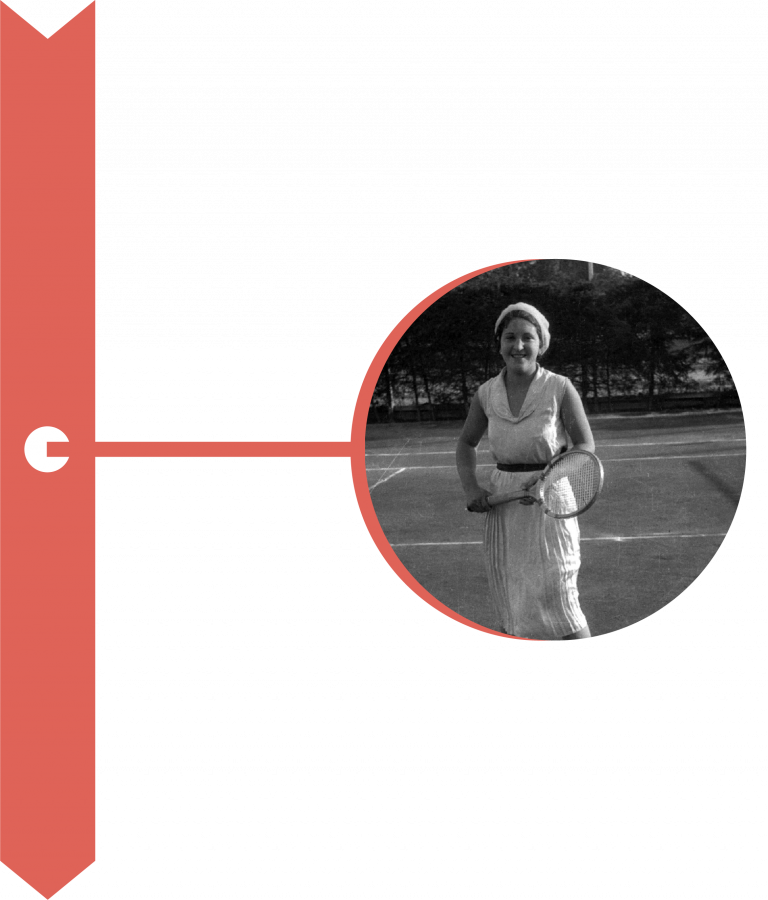

Anita
Lizana
1915-1994
Leading female tennis player. She was the first Latin American and first Hispanic player to be ranked World Number 1.
Anita was born into a family of passionate tennis players, so she started practicing this sport very early. She won her first championship when she was only 11 years old, and at the age of 15, she was already an adult national champion. Since tennis was a relatively new sport in Chile, Anita decided to go abroad, receiving financial support from her fans to achieve it. After leaving Chile, she began a streak that led her to debut at Wimbledon and Roland Garros and conquer fifth place in the world rankings. In 1937, at 22 years old, she contested for the title of Forest Hills (the current United States Open), becoming number one in the world and the first Latin American player to win a Grand Slam in singles.
In 1940, as a result of the suspension of tournaments in Europe due to World War II, she temporarily retired from tennis. She resumed her career in 1946 at the age of 30, winning five mixed doubles titles with her husband before retiring for good.
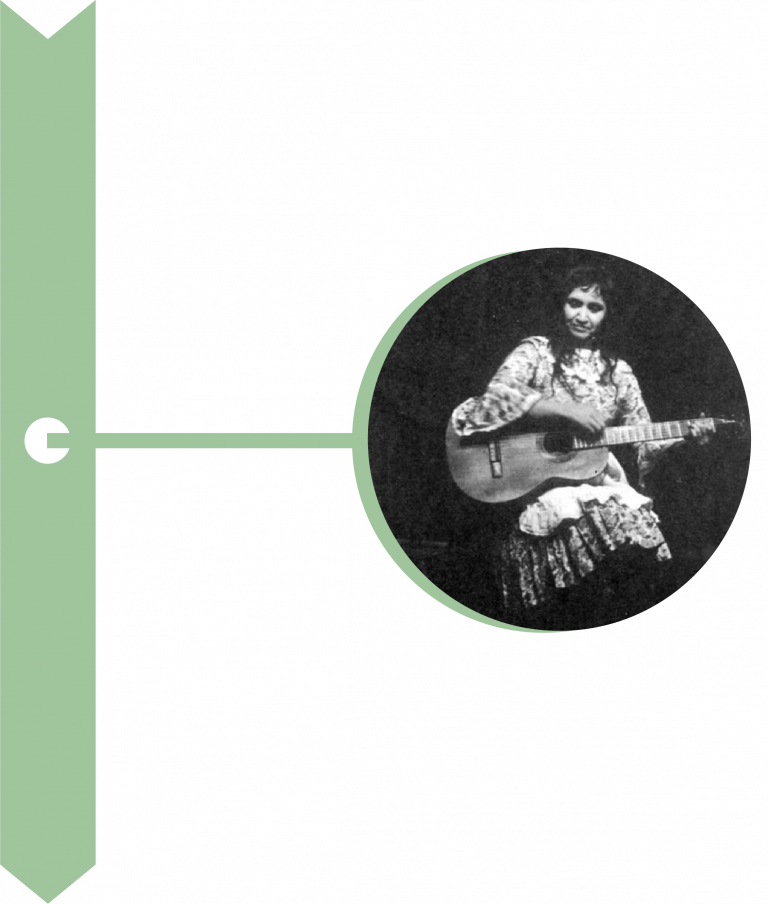
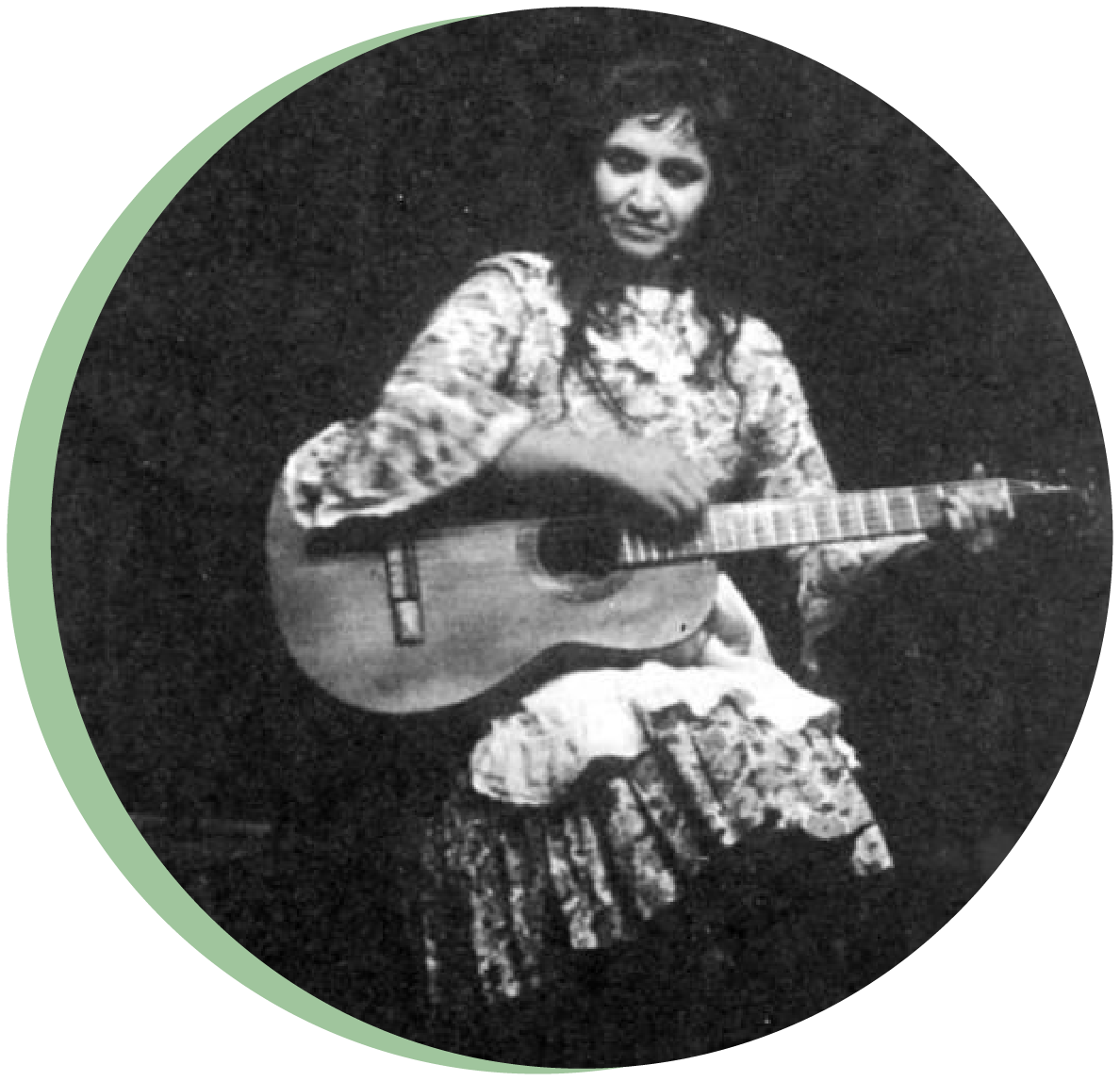
Violeta
Parra
1917-1967
Renowned singer, songwriter, and artist, who pioneered the New Chilean Song, a movement that blended traditional folk music with political and social activism.
Violeta Parra was born into a traditional family in southern Chile, spending her childhood in various rural locations. She started playing guitar at the age of 9, and by 12, she was already composing her first songs. To support her family financially, she performed along with her brothers in restaurants, bars, and even the streets from a young age.
In the early 1950s, she began extensive work to collect and research musical traditions from around the country. This is how her repertoire, which until then was mainly influenced by major international figures, started including traditional songs of the Chilean countryside, which allowed her to discover the great value of national identity. After this compilation work, Parra began composing her own songs based on traditional folk forms.
Her life was marked by constant travel, both within the country and abroad, traveling worldwide to research, organize concerts, and give lectures and workshops about folklore. Parra was also a visual artist, and in April 1964, she did an exhibition of her arpilleras (brightly colored patchwork), oil paintings, and wire sculptures in the Museum of Decorative Arts of the Louvre – the first solo exhibition of a Latin American artist at the museum.
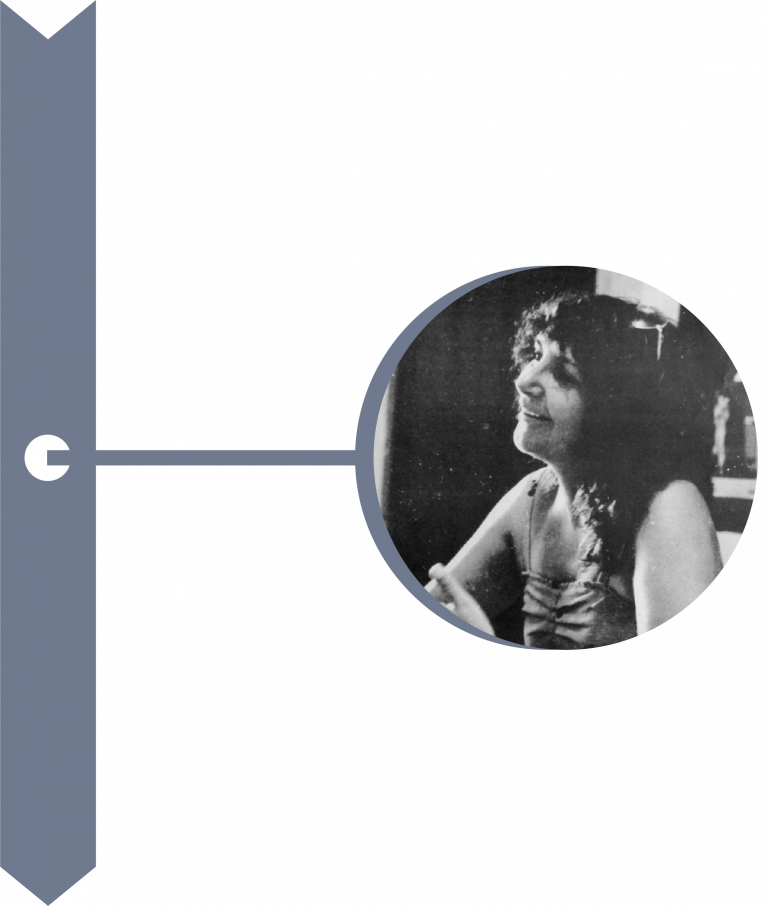
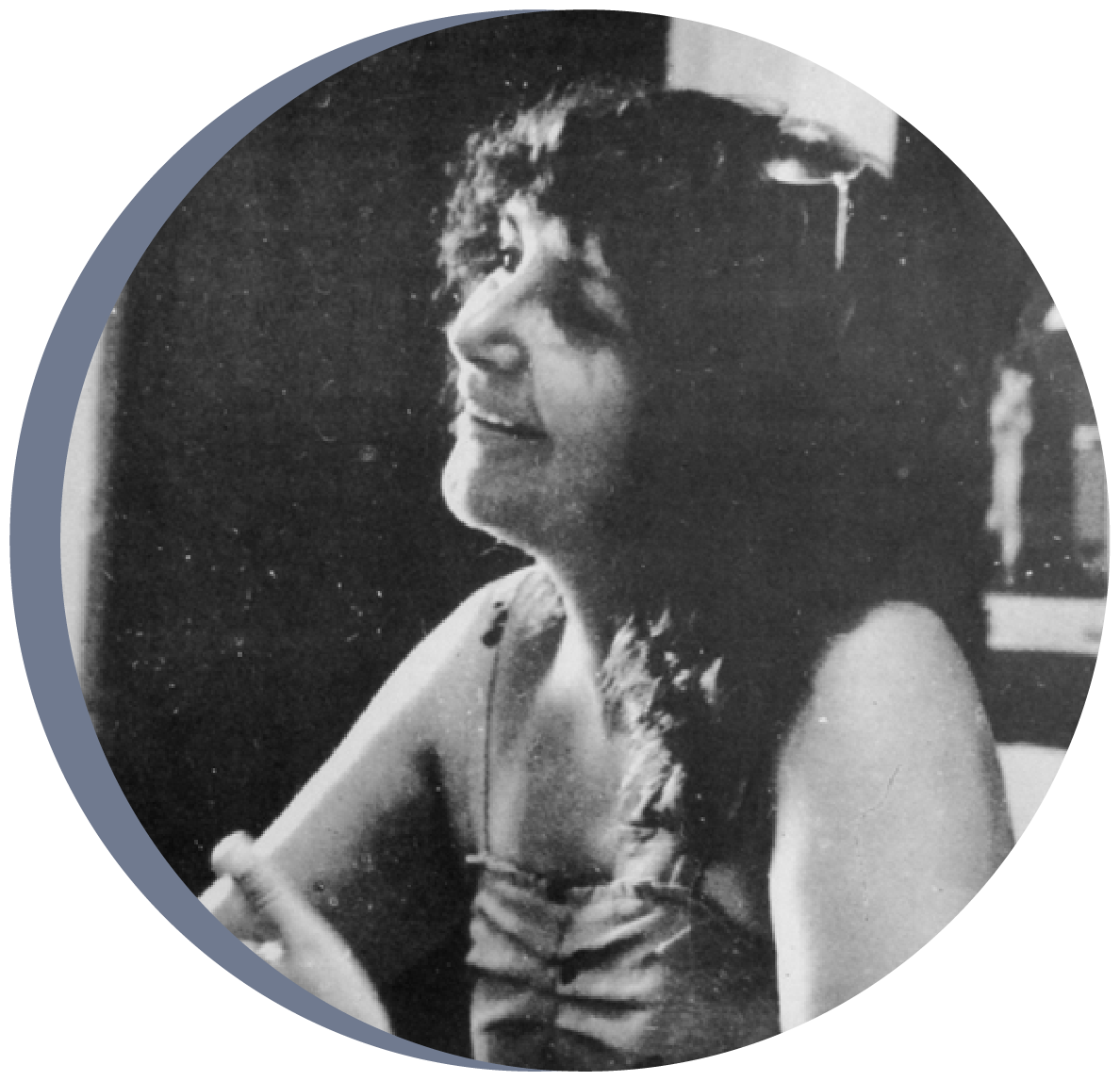
Julieta
Kirkwood
1937-1985
Sociologist and political scientist considered one of the founders of the 80’s feminist movement and forerunner of gender studies in Chile.
Julieta studied at the University of Chile, where she experienced the emergence of local student and social movements strongly influenced by the May 1968 Movement in France. Kirkwood contributed to the re-founding of the Chilean feminist movement in the context of the military dictatorship, incorporating both academia and activism. In this context, she founded the Feminist Movement opposing the dictatorship of Augusto Pinochet under the motto: “democracy in the country and at home.”
As an academic, she joined the Latin American Faculty of Social Sciences (FLACSO), where she began her academic work and published relevant studies related to feminism. As an activist, she participated in various organizations such as the Círculo de Estudios de la Mujer (Women’s Studies Circle) and actively participated in feminist social movements such as MEMCh 83 and the Women’s Department of the National Trade Union Coordination.
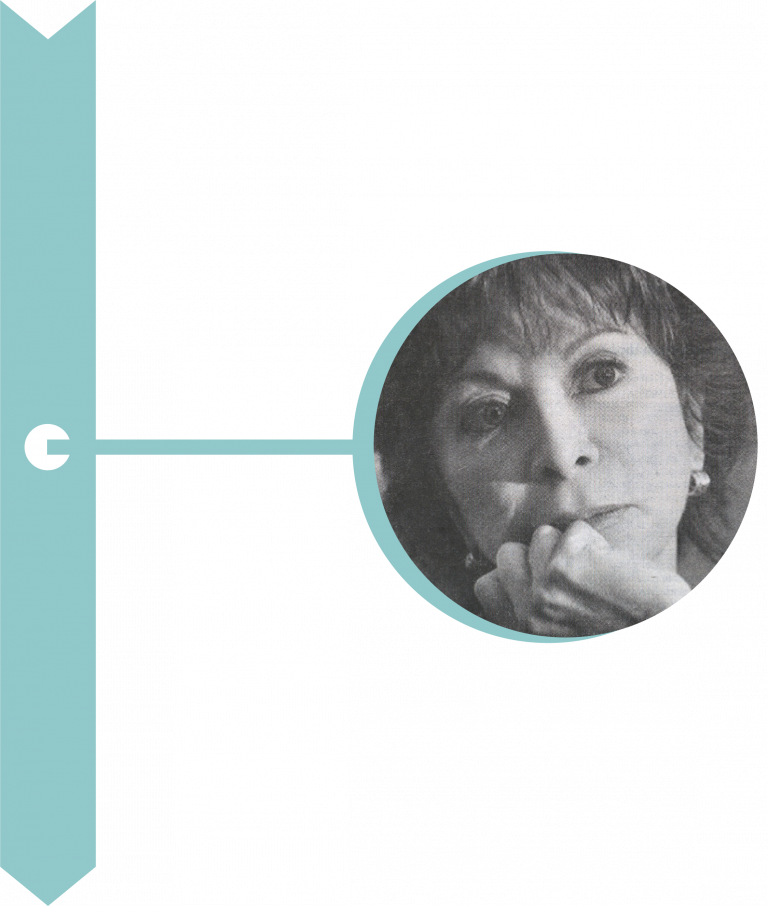
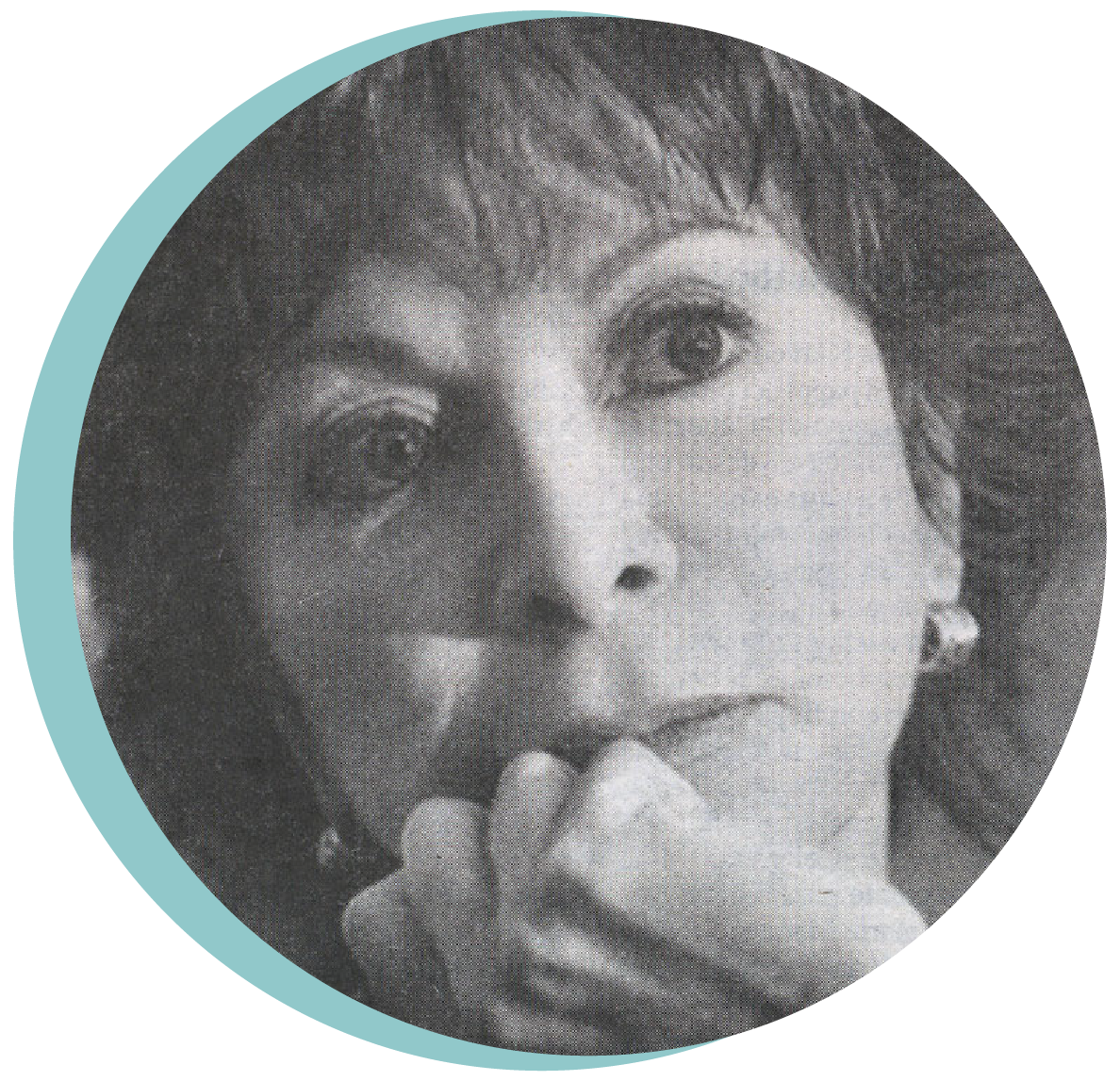
Isabel
Allende
1942
Writer considered the most widely read living Spanish-speaking author in the world, having her work translated into more than 40 languages.
Isabel gained worldwide recognition in 1982 with the publication of her first novel, La Casa de los Espíritus (The House of the Spirits), which started as a farewell letter to her dying grandfather. Since then, she has written more than 25 novels that have been acclaimed worldwide and translated into more than 40 languages. In her work, Isabel Allende addresses political and social causes, issues related to women, and historical events, while weaving together myth and realism elements.
In addition to her work as a writer, Allende is also a human rights champion and activist. After the death of her daughter Paula in 1992, in her honor, she created the Isabel Allende Foundation, dedicated to the protection and empowerment of women and girls. The foundation has awarded grants to more than 100 nonprofit organizations around the world.

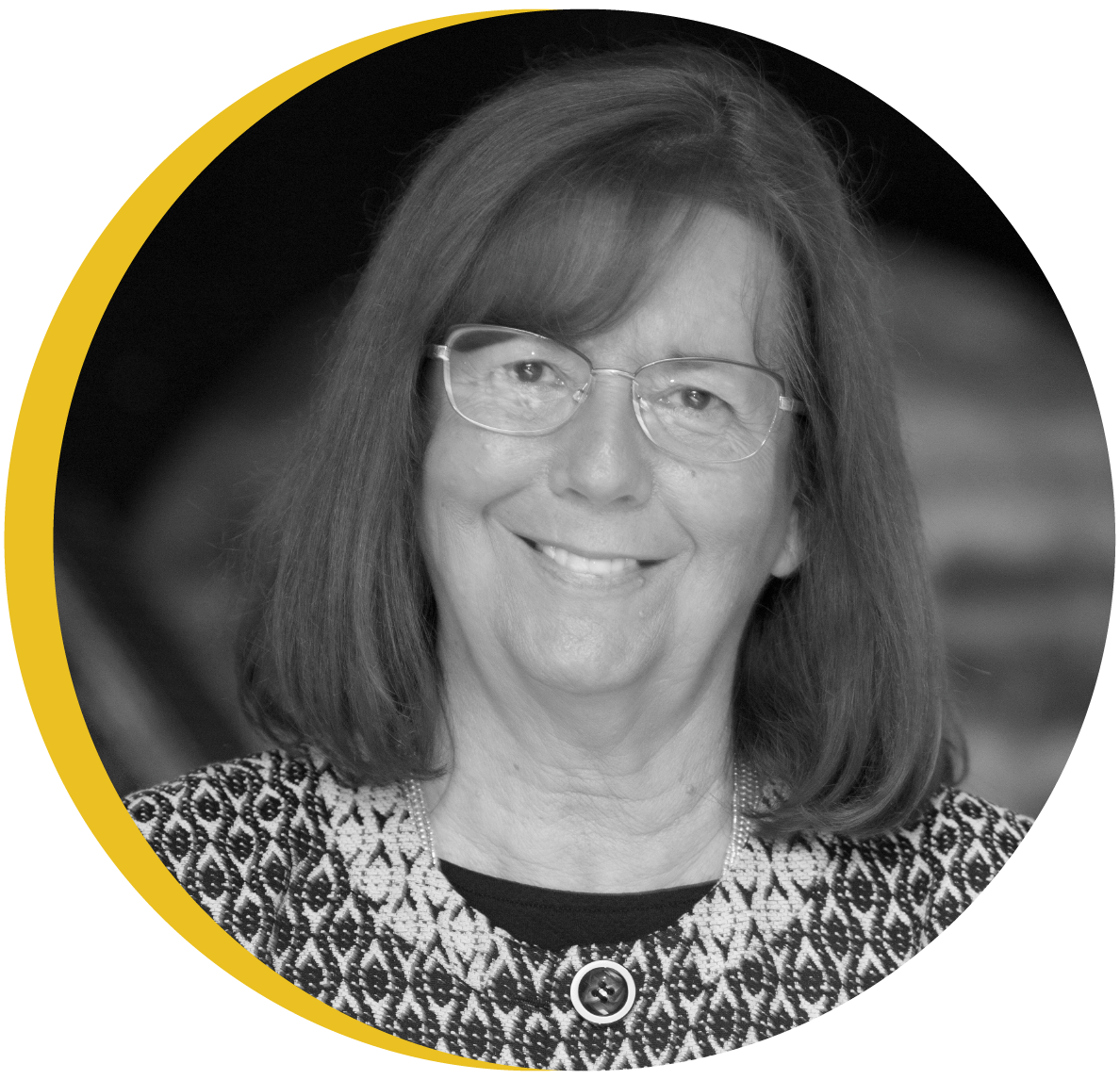
María Teresa
Ruiz
1946
Award-winning astronomer and academic who has discovered several celestial bodies. First woman to receive the National Prize for Exact Sciences.
María Teresa began studying Chemical Engineering at the University of Chile, but after a visit to the Cerro Tololo observatory, she decided to study astronomy. María Teresa was the first woman to obtain a degree in Astronomy at the University of Chile and the first one to get a Ph.D. in astrophysics at Princeton. Later, in 1997 she also became the first woman to receive the National Prize of Exact Sciences and the first President of the Chilean Academy of Sciences.
She has focused her work on studying low-mass dwarf stars, which led her to discover a supernova, two planetary nebulae, and the first brown dwarf in the solar system’s vicinity, which she named Kelu (red in the Mapudungún language). She has also published several successful books on scientific dissemination.
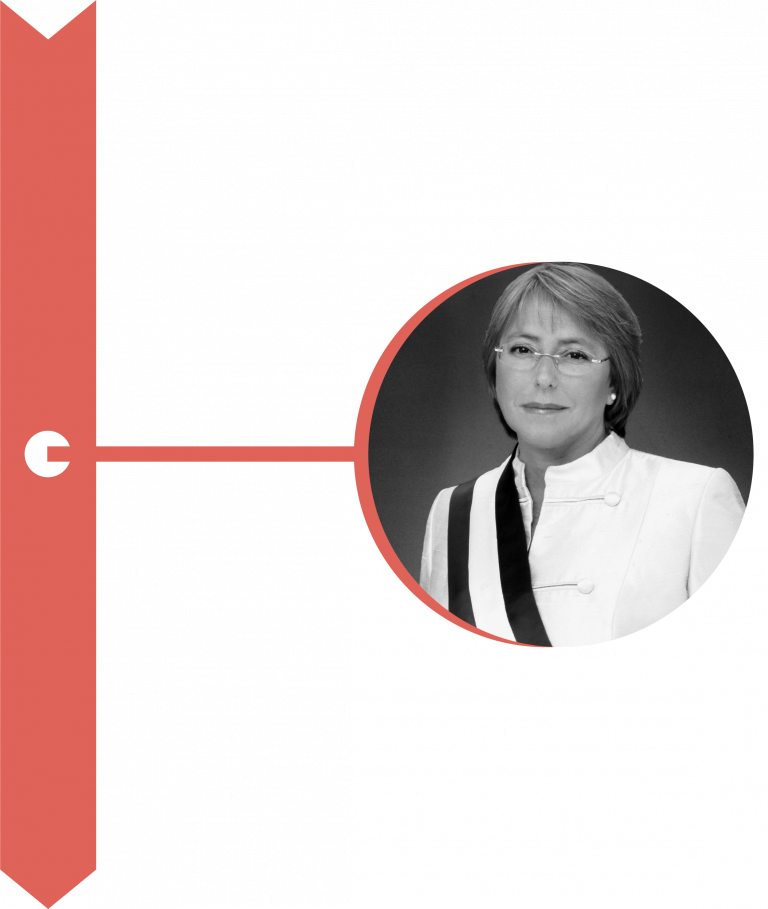
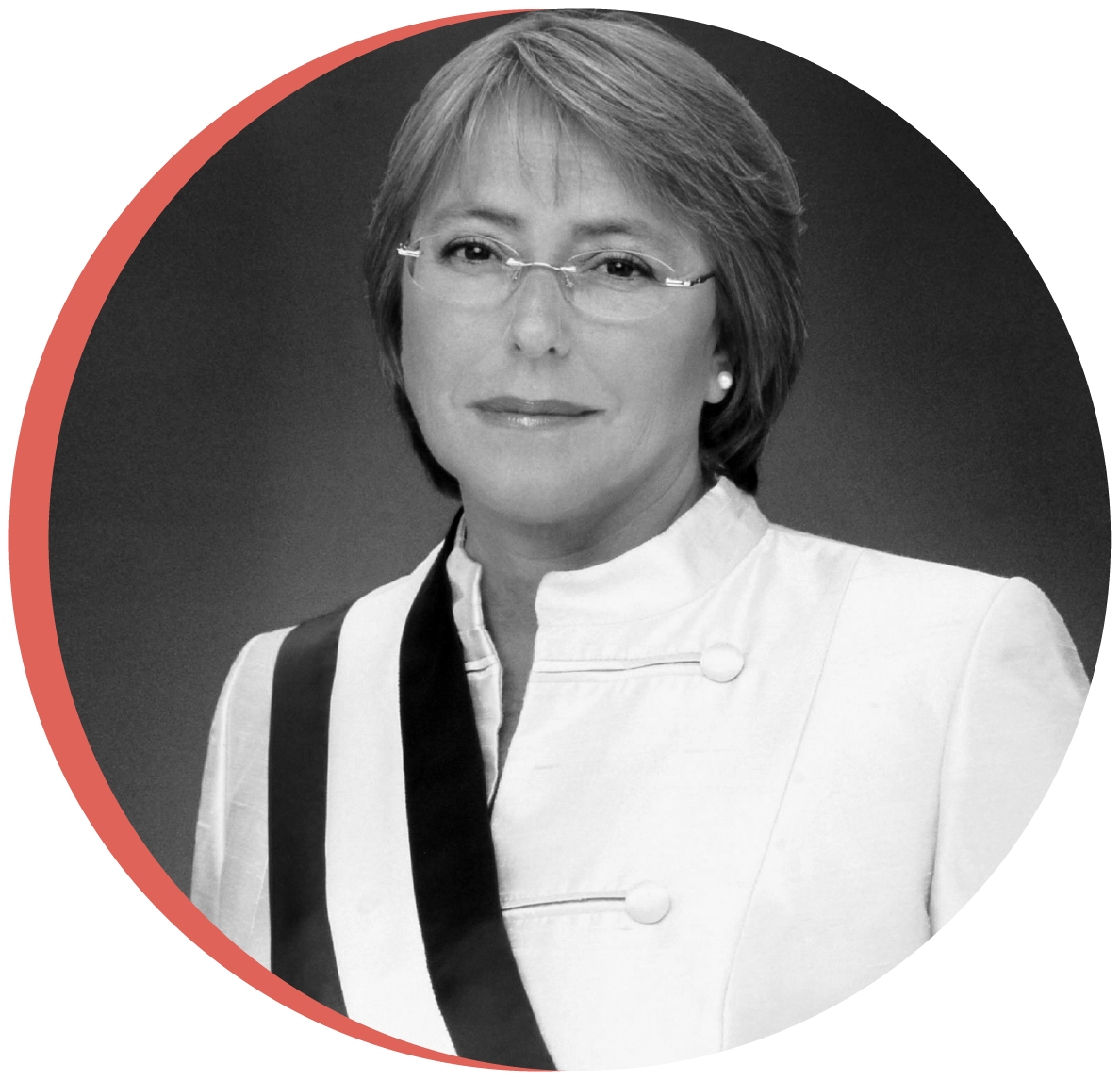
Michelle
Bachelet
1951
First female Minister of Defense in Latin America and first female President of Chile. Currently serves as the United Nations High Commissioner for Human Rights.
Michelle was a top student and excelled in her studies from an early age, which allowed her to enter the University of Chile’s Medical School with one of the best rankings. During her undergraduate studies, she joined the Socialist Party Youth and participated in university politics.
The 1973 military coup and dictatorship abruptly interrupted her studies. She was arrested and tortured along with her mother, after which both went into exile. Abroad, she denounced the human rights violations that were taking place in Chile. She was able to return to the country in 1979, resuming her medical studies and graduating as a medical surgeon. After the return to democracy in 1990, Bachelet continued her political career being appointed as Minister of Health in 2000 and as Minister for National Defense in 2002, becoming the first Latin American woman in charge of the latter portfolio.
She was elected President of Chile in two terms (2006-2010 and 2014-2018), becoming the first woman to hold the presidency in the country. Between 2010 and 2013, she was the first Executive Director of UN Women. Since 2018 she has served as the United Nations High Commissioner for Human Rights.
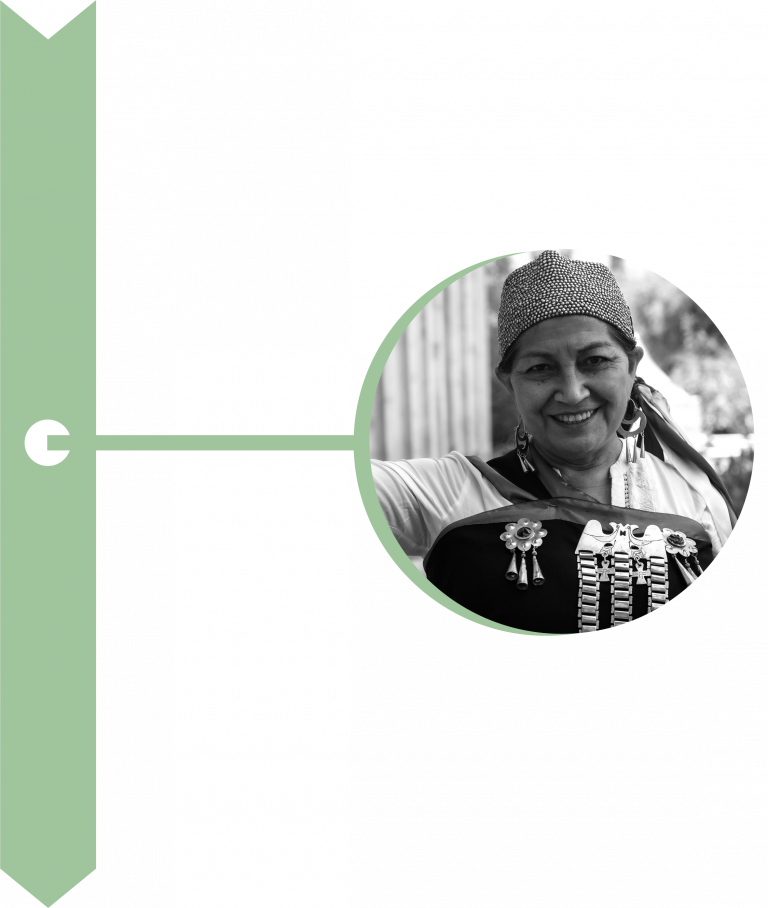
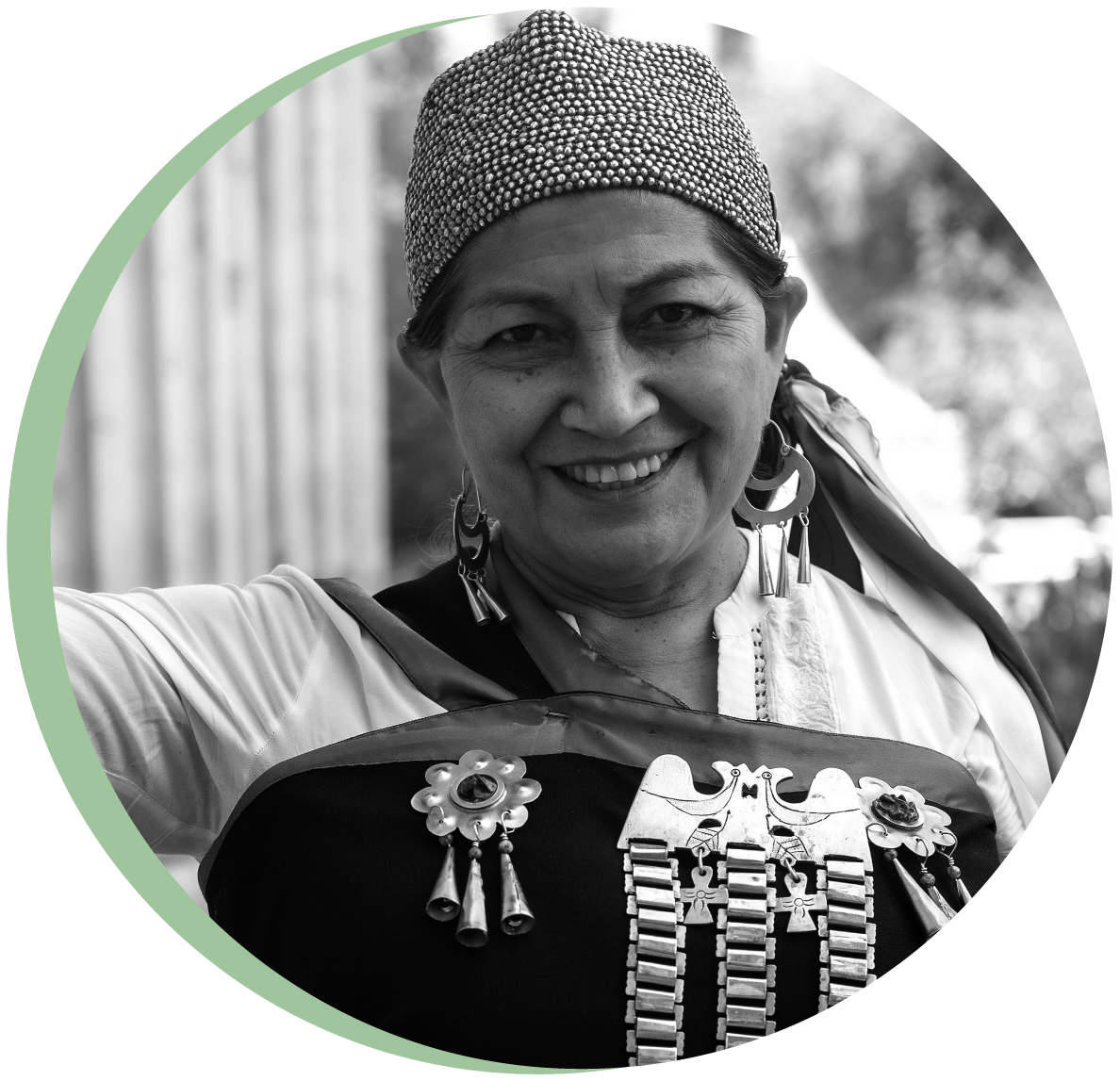
Elisa
Loncón
1963
Mapuche academic, linguist, and activist for the rights of indigenous peoples. First President of the Constitutional Convention of Chile in 2021.
Elisa was born in Lefweluan, a Mapuche community located in the southern region of La Araucanía. She graduated as an English teacher and then continued her postgraduate studies at the Institute of Social Studies in The Hague and the University of Regina in Canada. She also holds a Ph.D. in Humanities from the University of Leiden and a Ph.D. in Literature at the Pontifical Catholic University of Chile.
From an early age, she joined various indigenous organizations, and during her university years, Loncón was part of the student movement against the military dictatorship. As a scholar, she has focused her research on the teaching of Mapudungún (the Mapuche language) and has written several books and articles on the innovation and expansion of the lexical resources of that language.
In 2021, Elisa Loncón was elected as the first President of the Constitutional Convention, the constituent body in charge of drafting a new Political Constitution after the approval of the national plebiscite held in October 2020.

